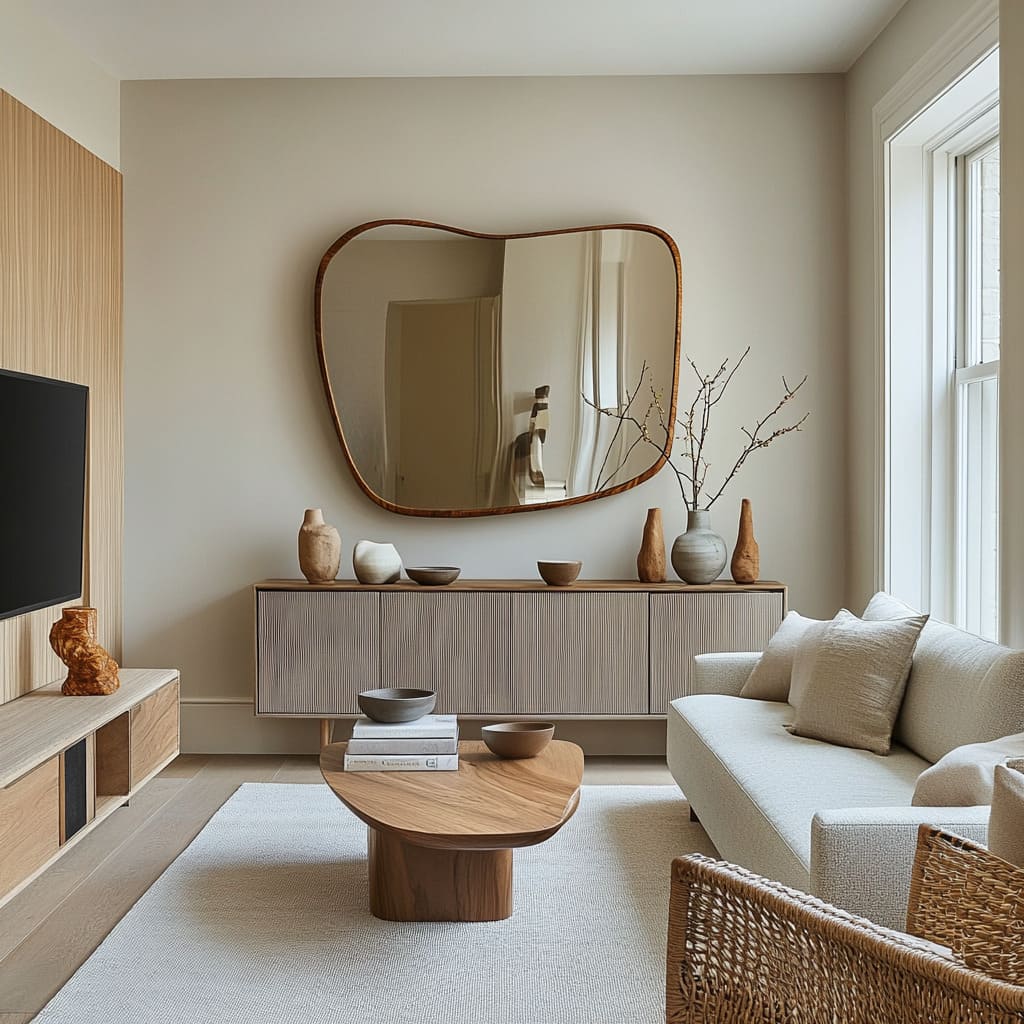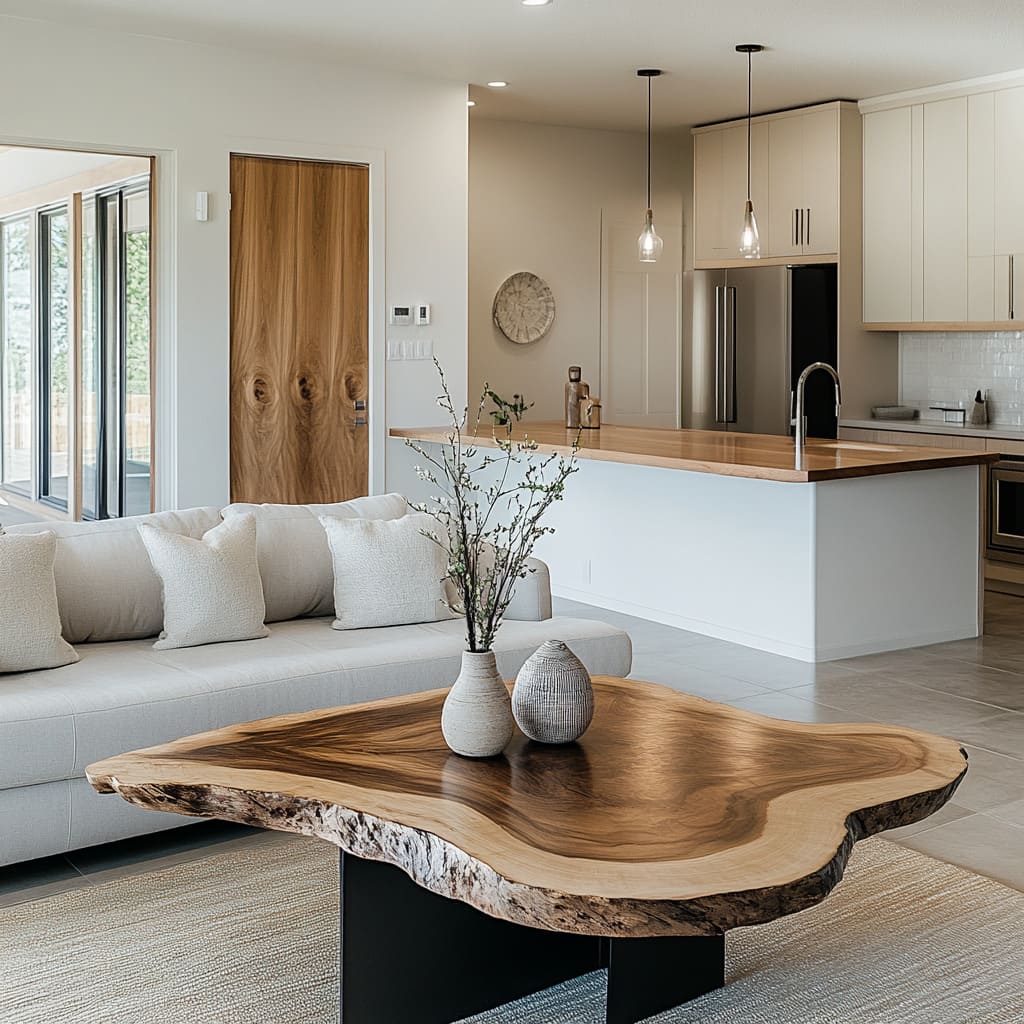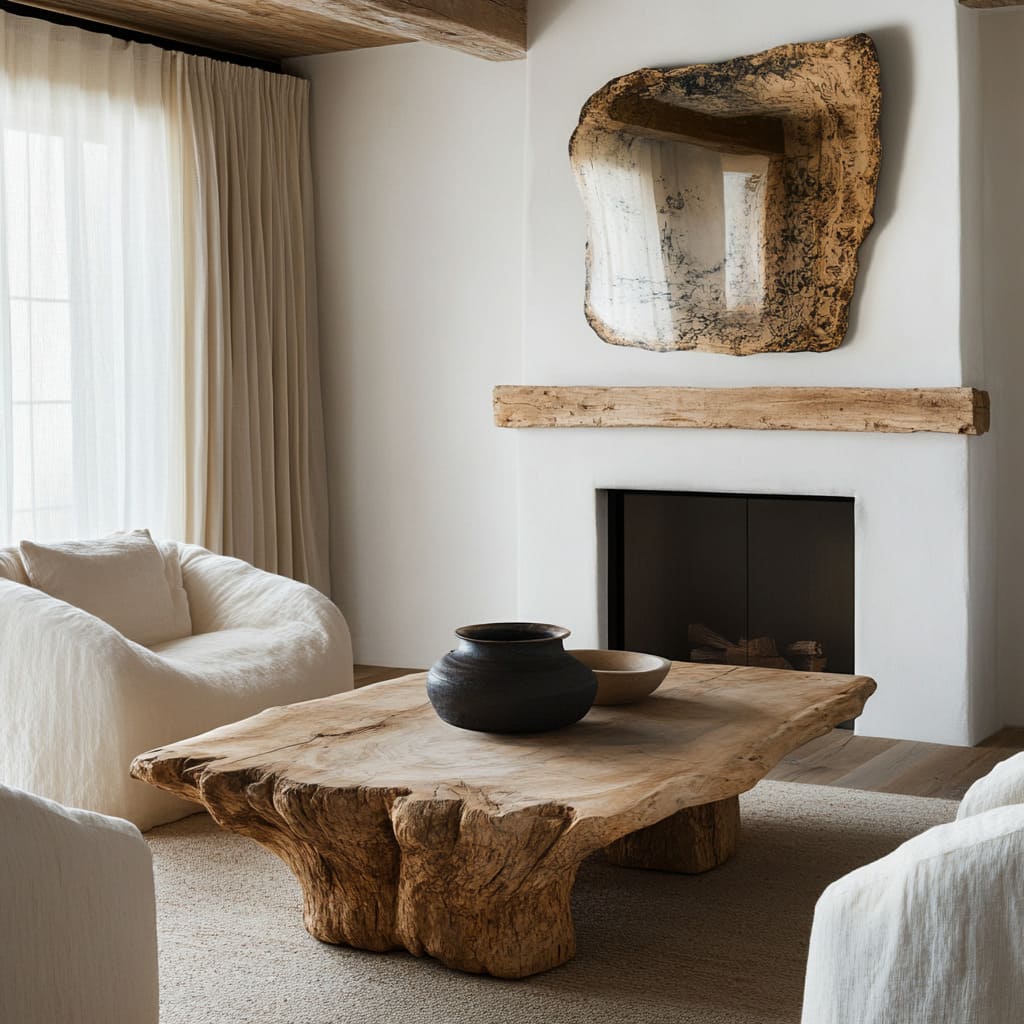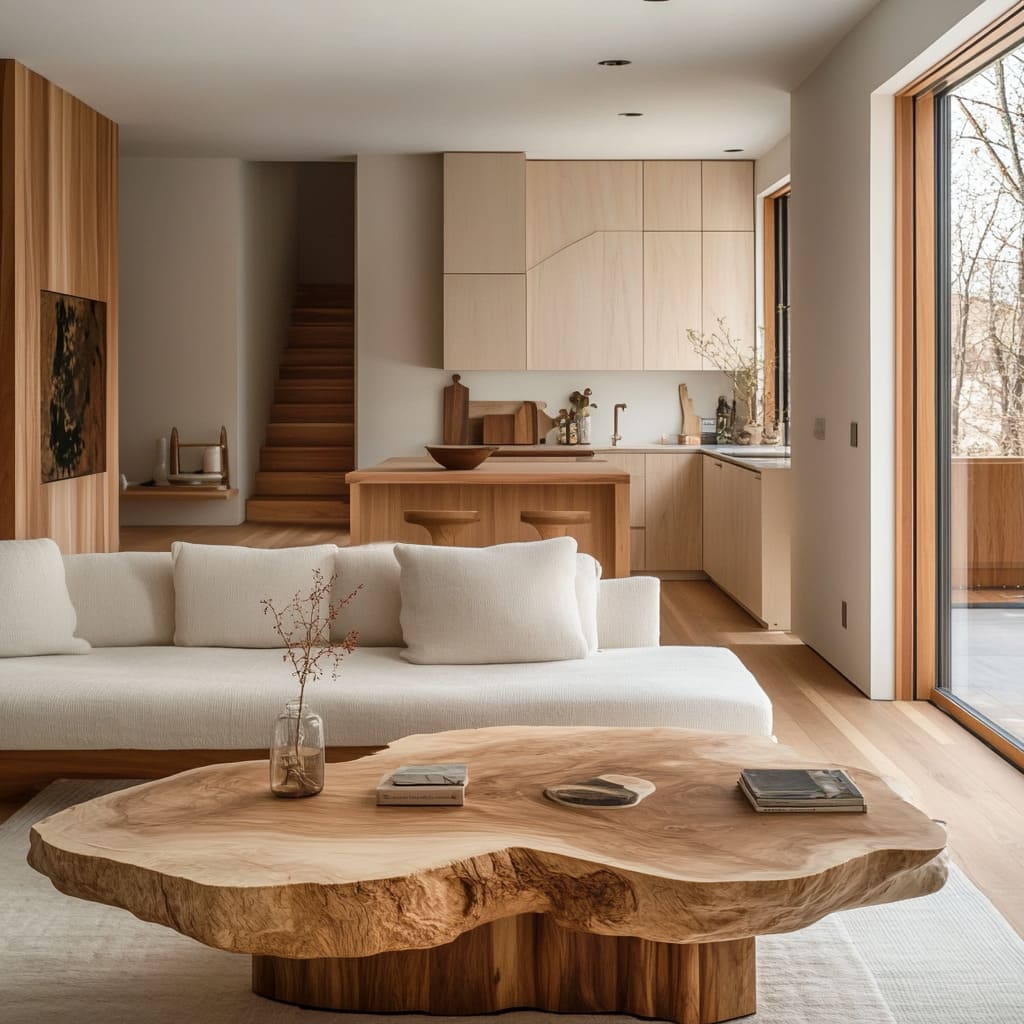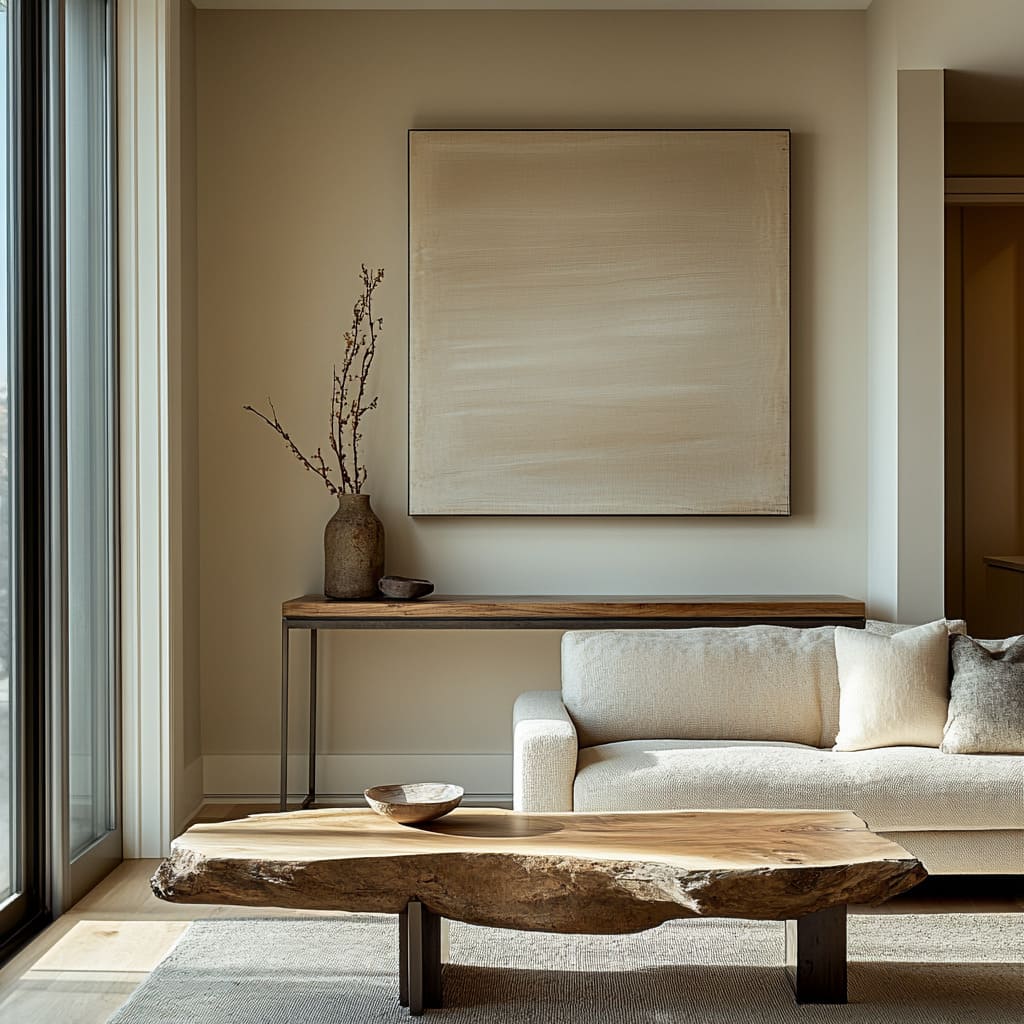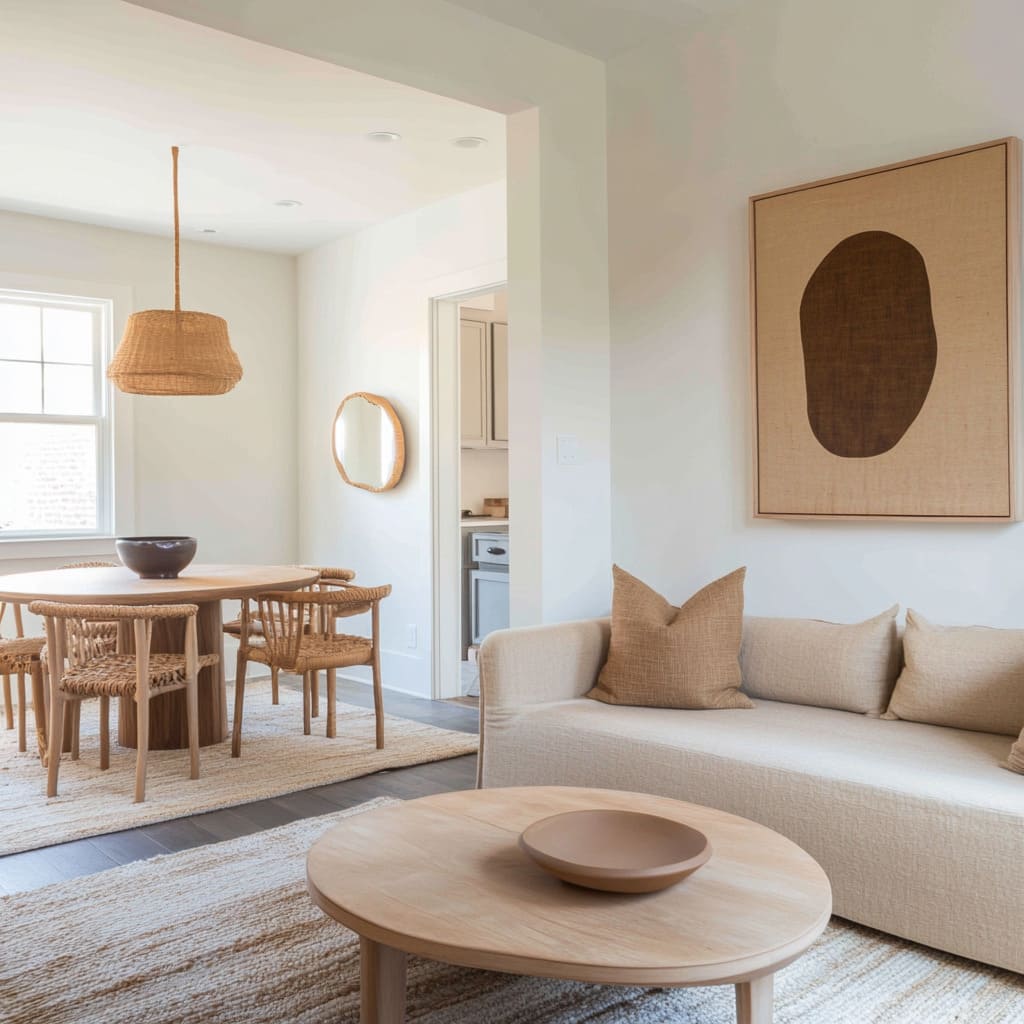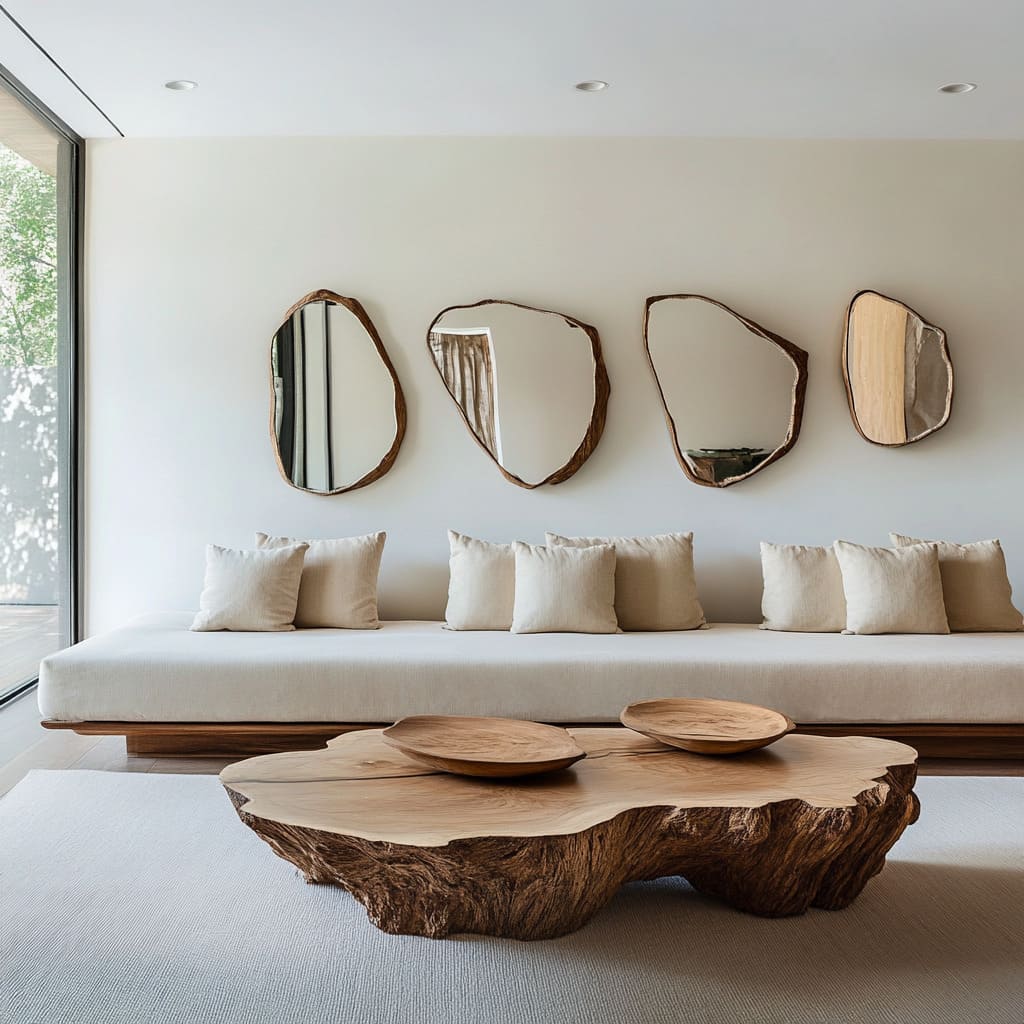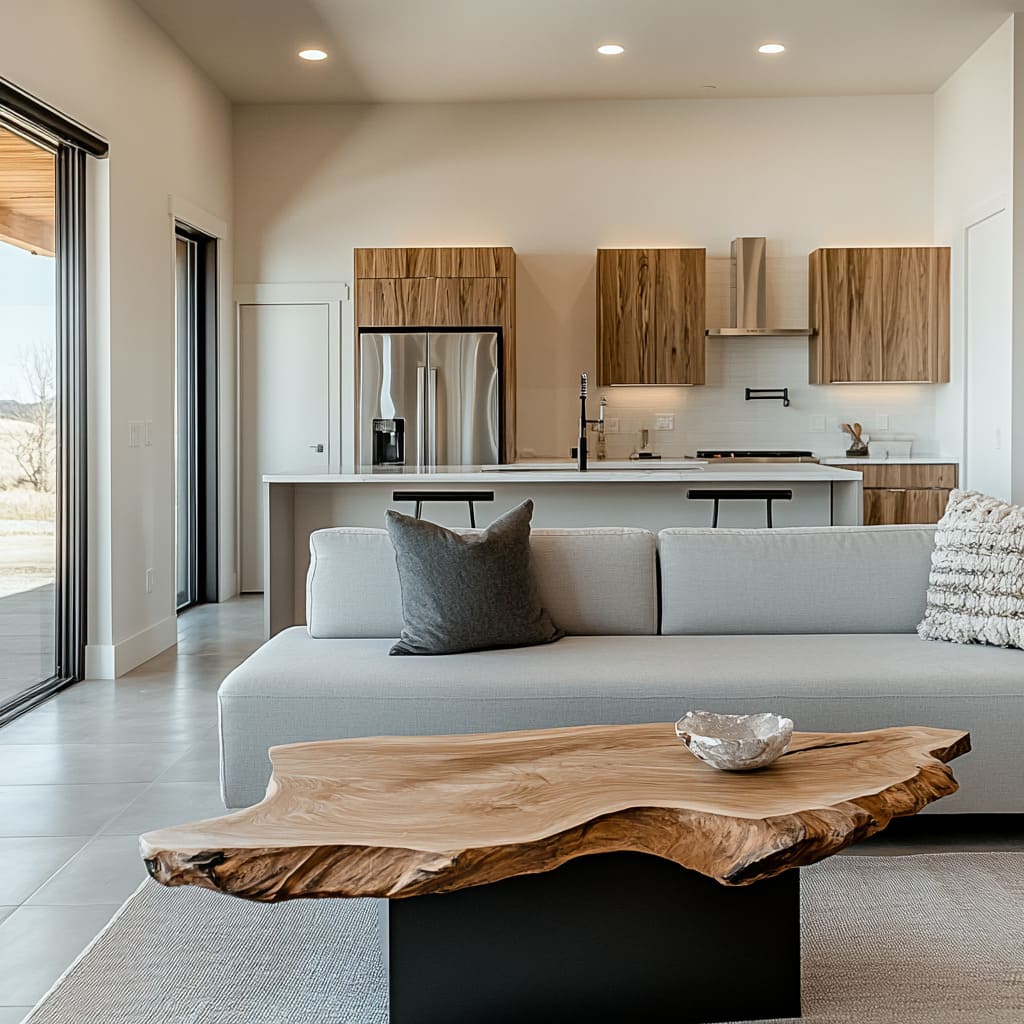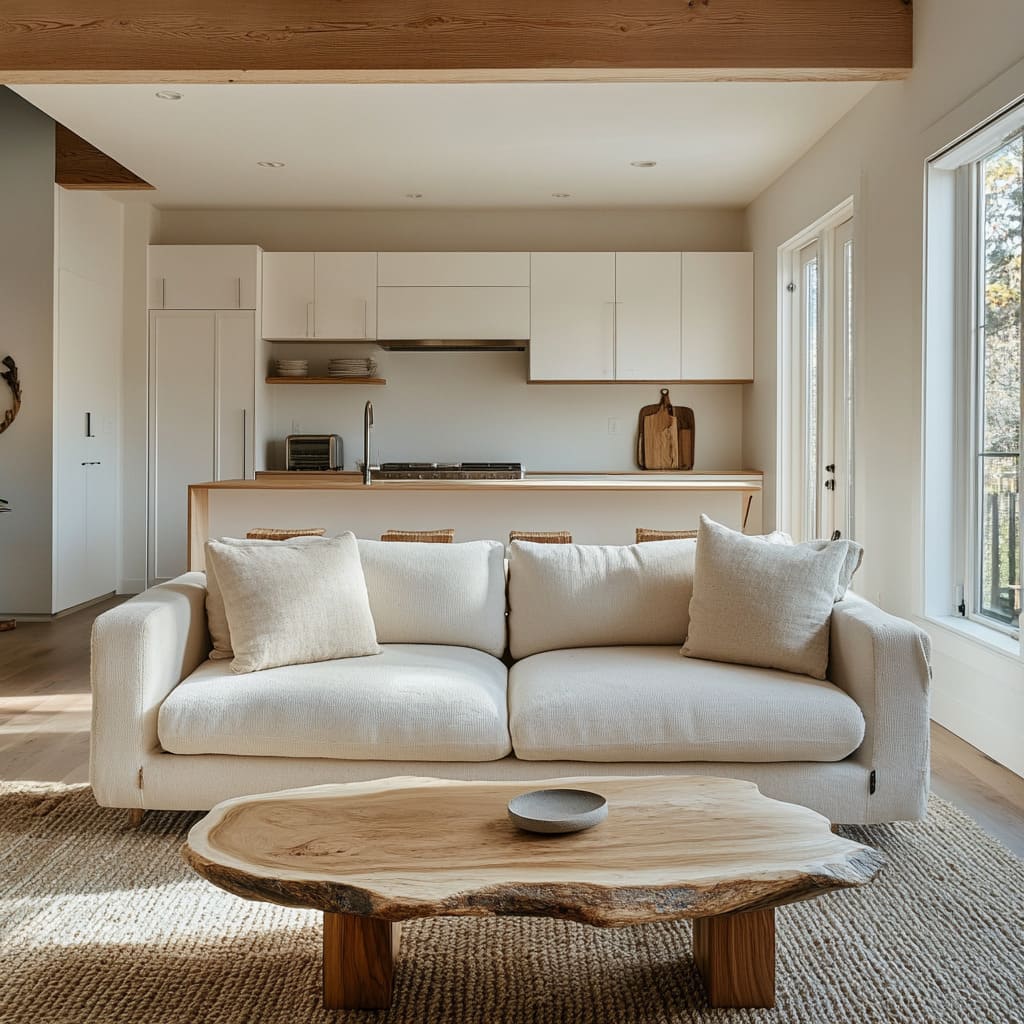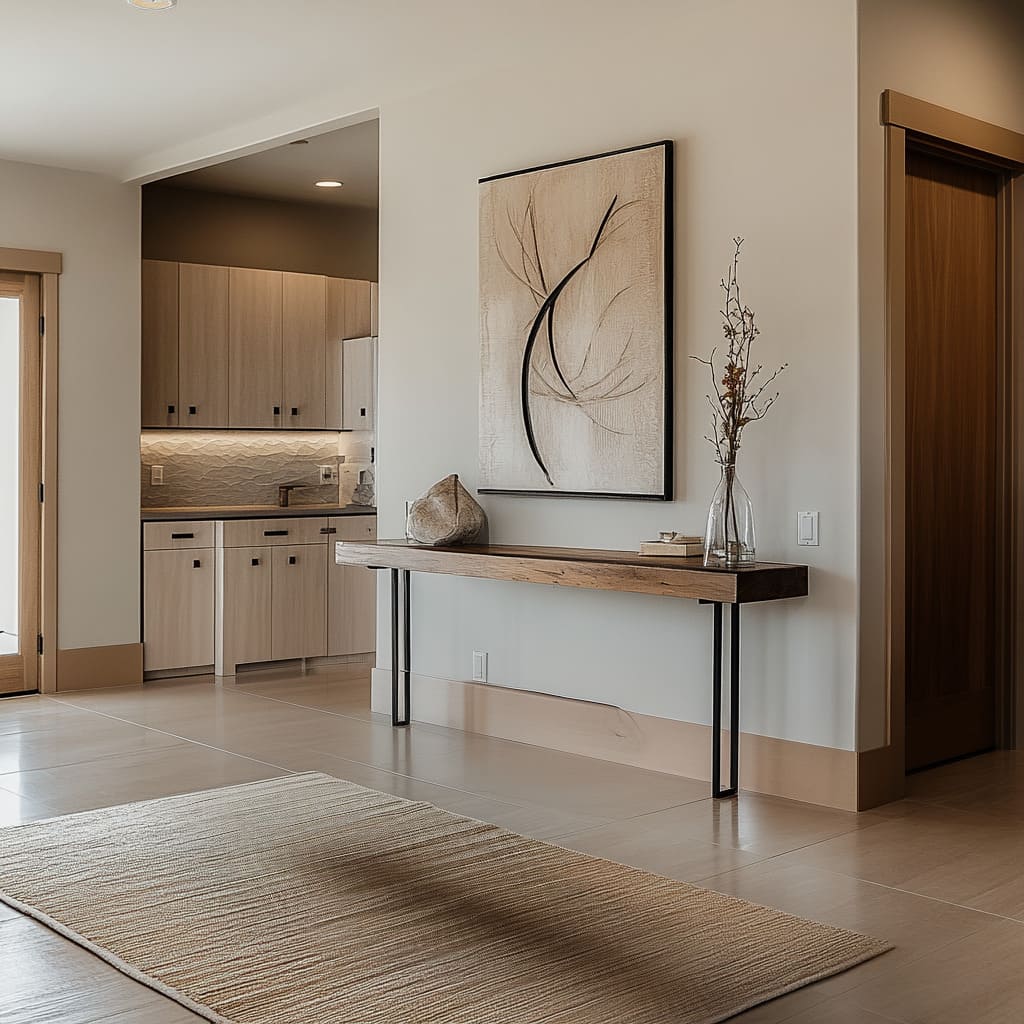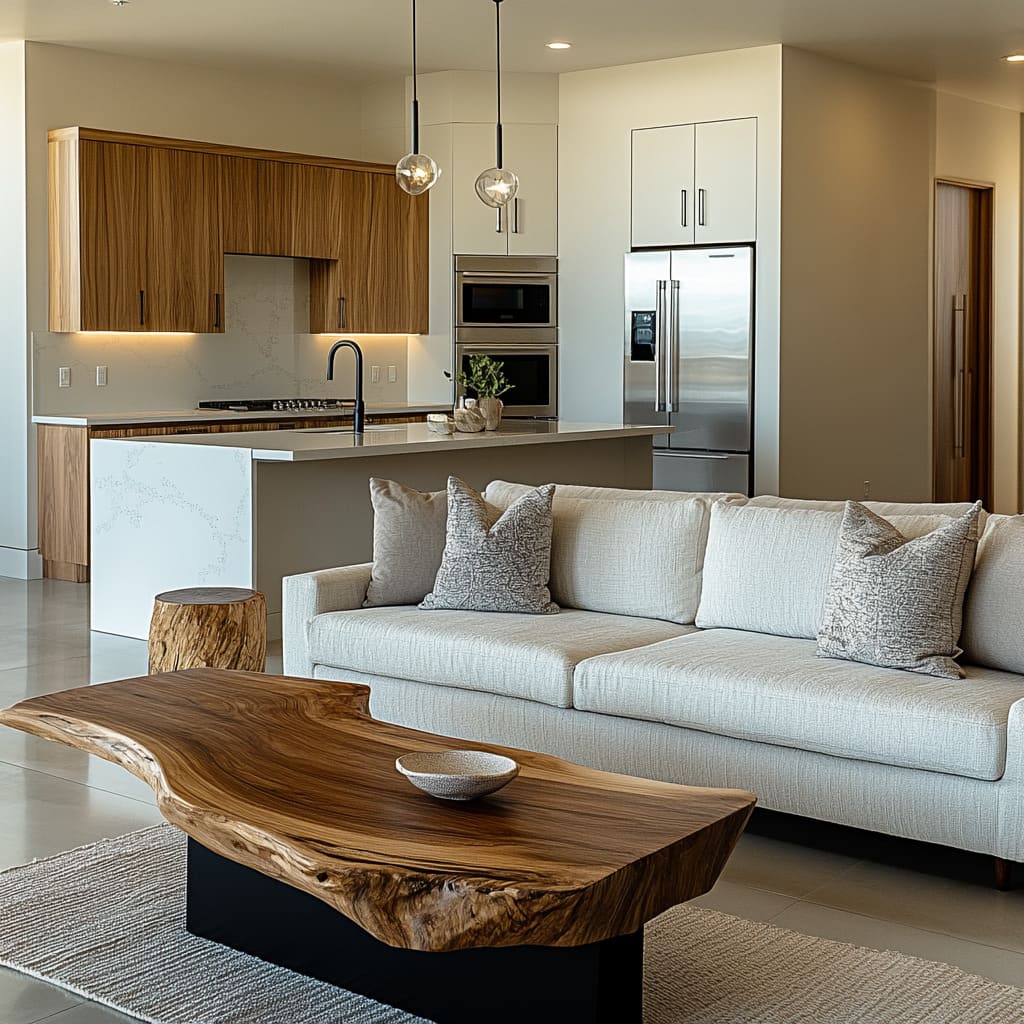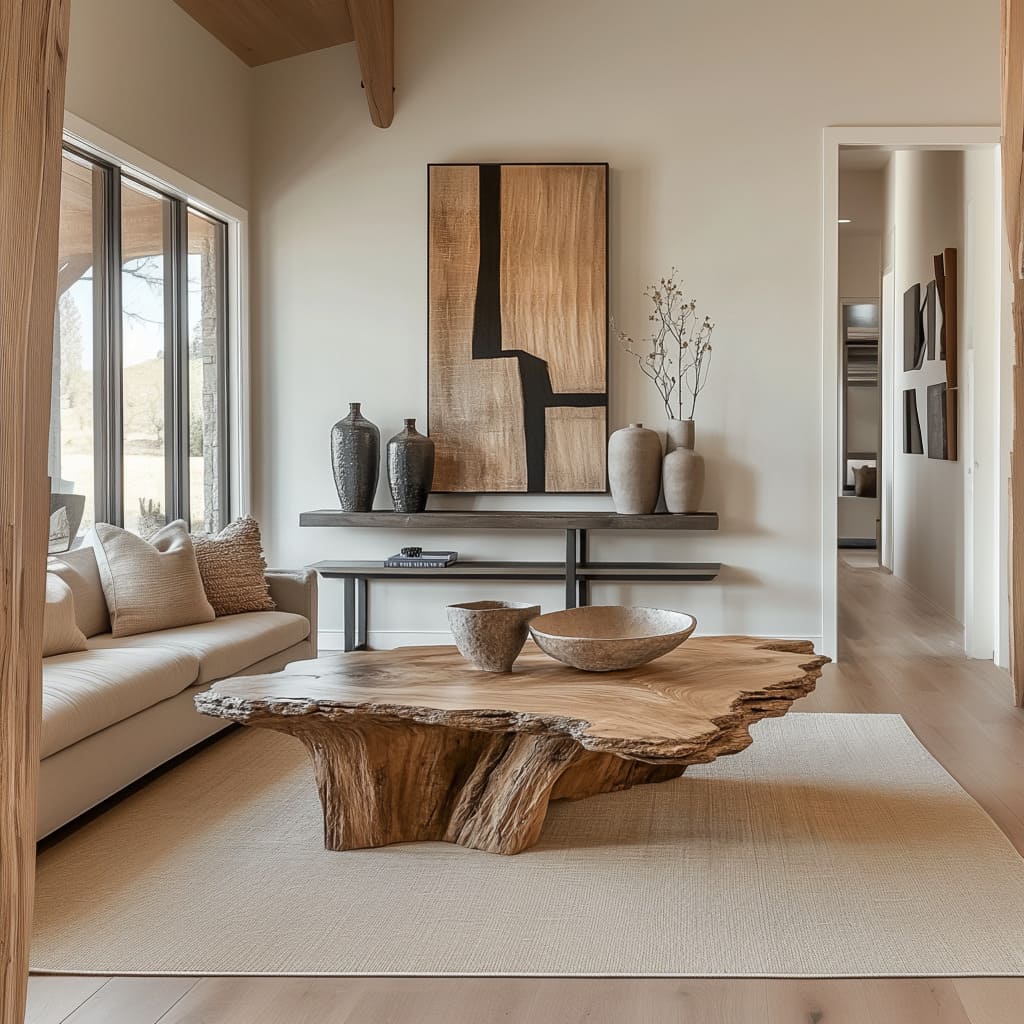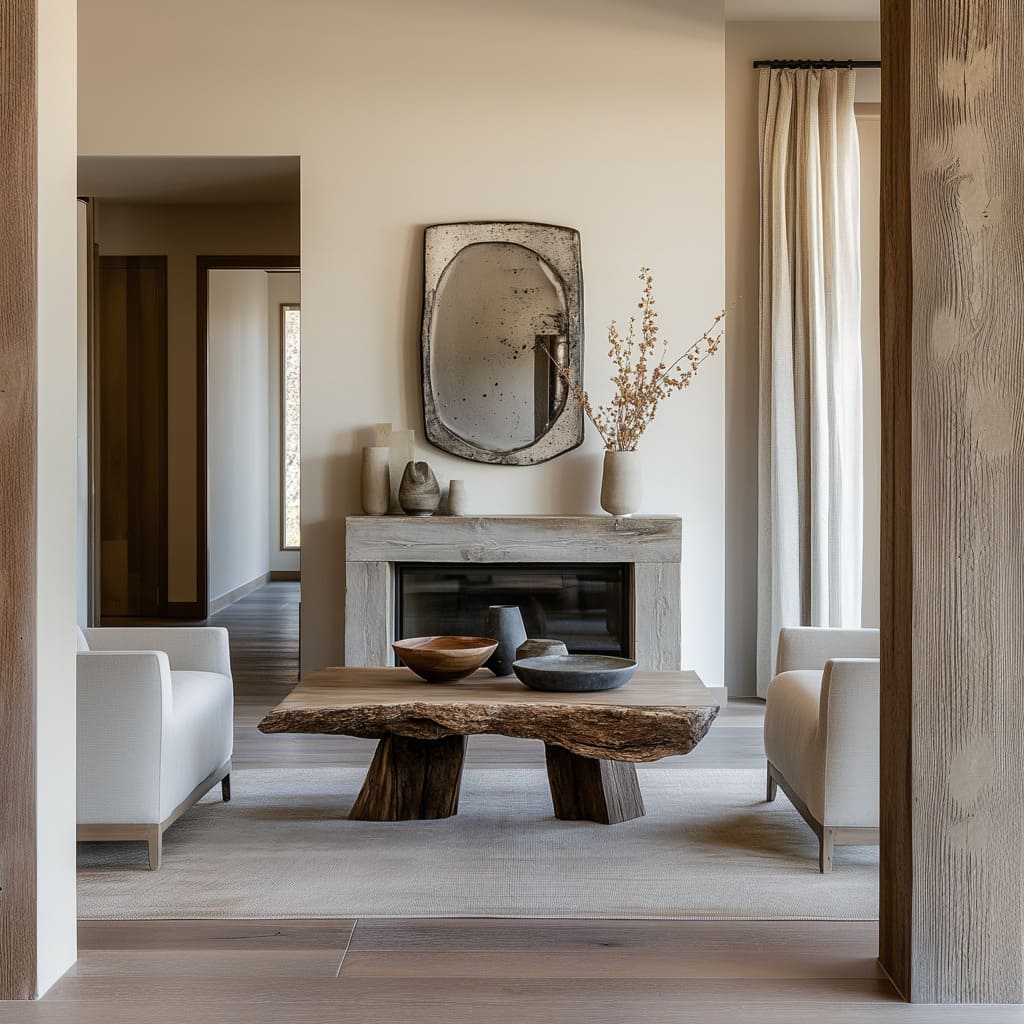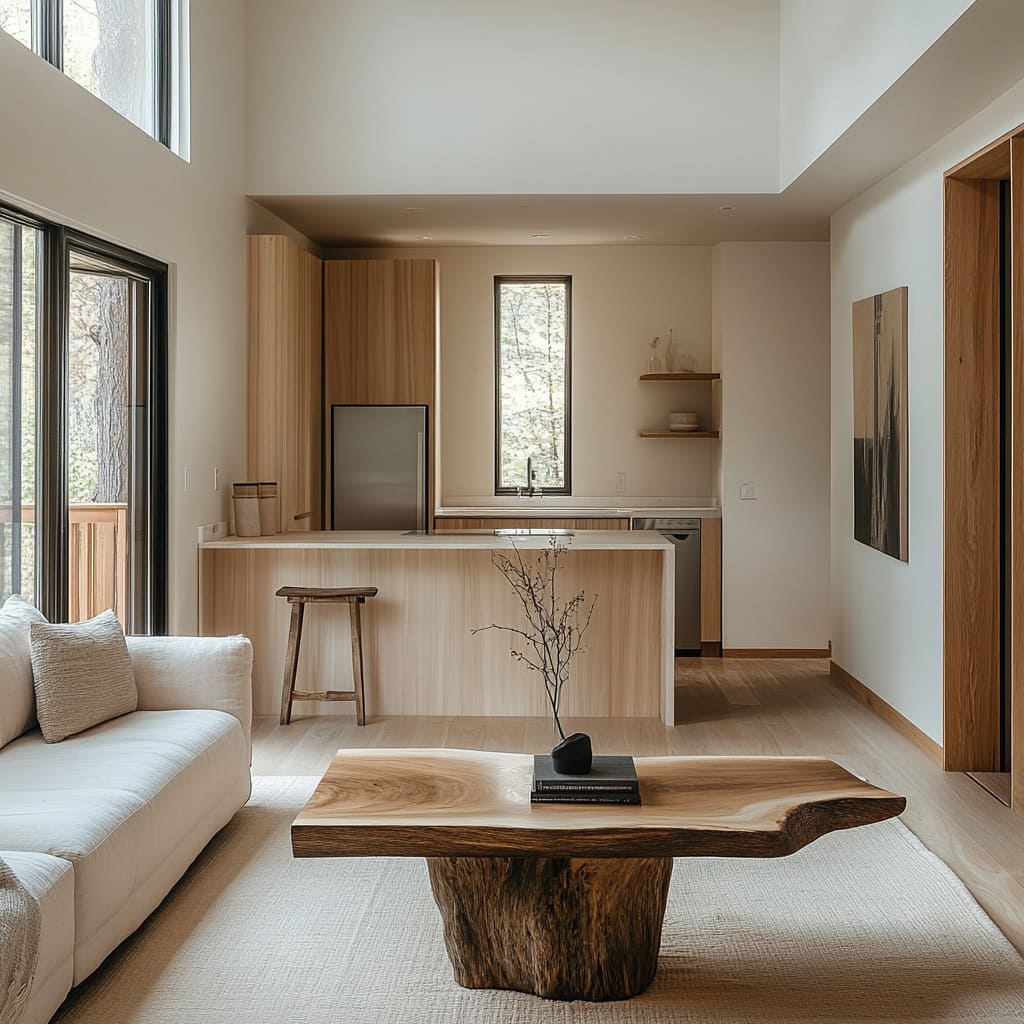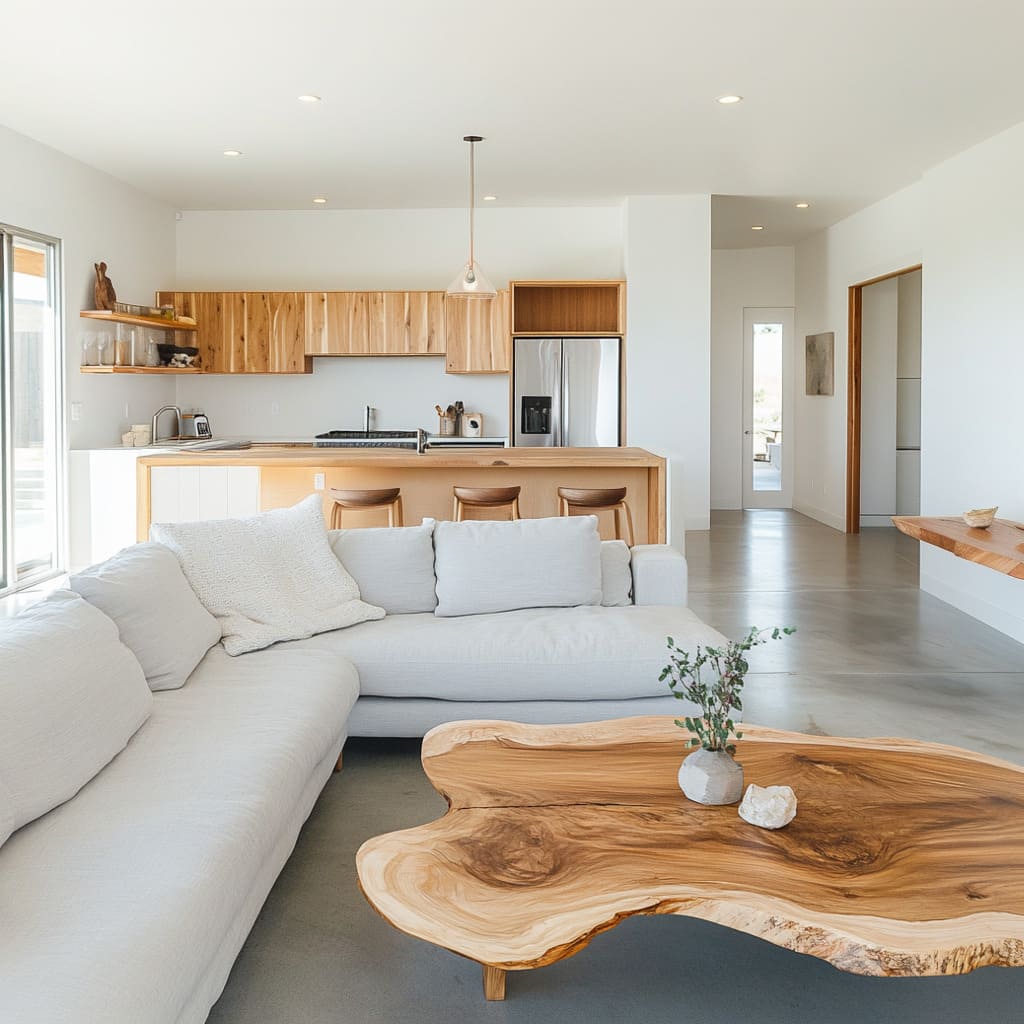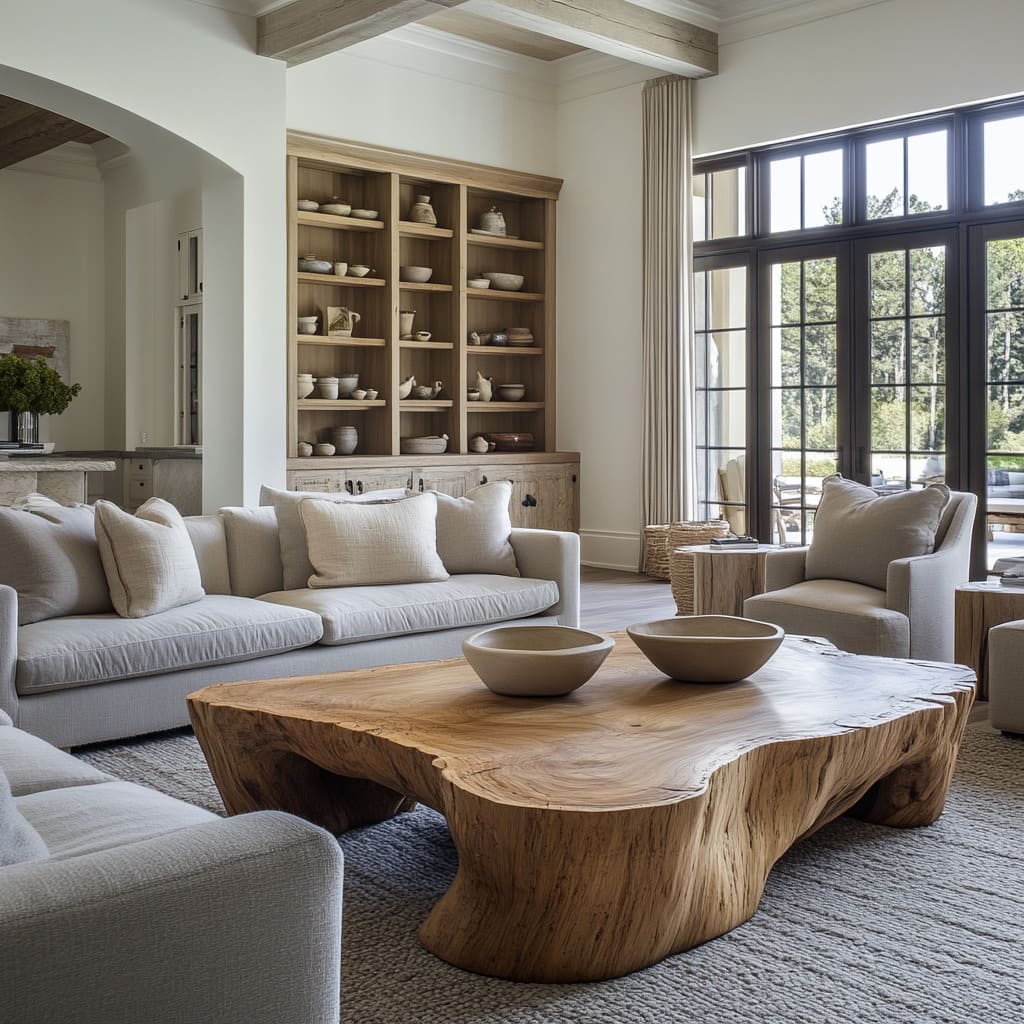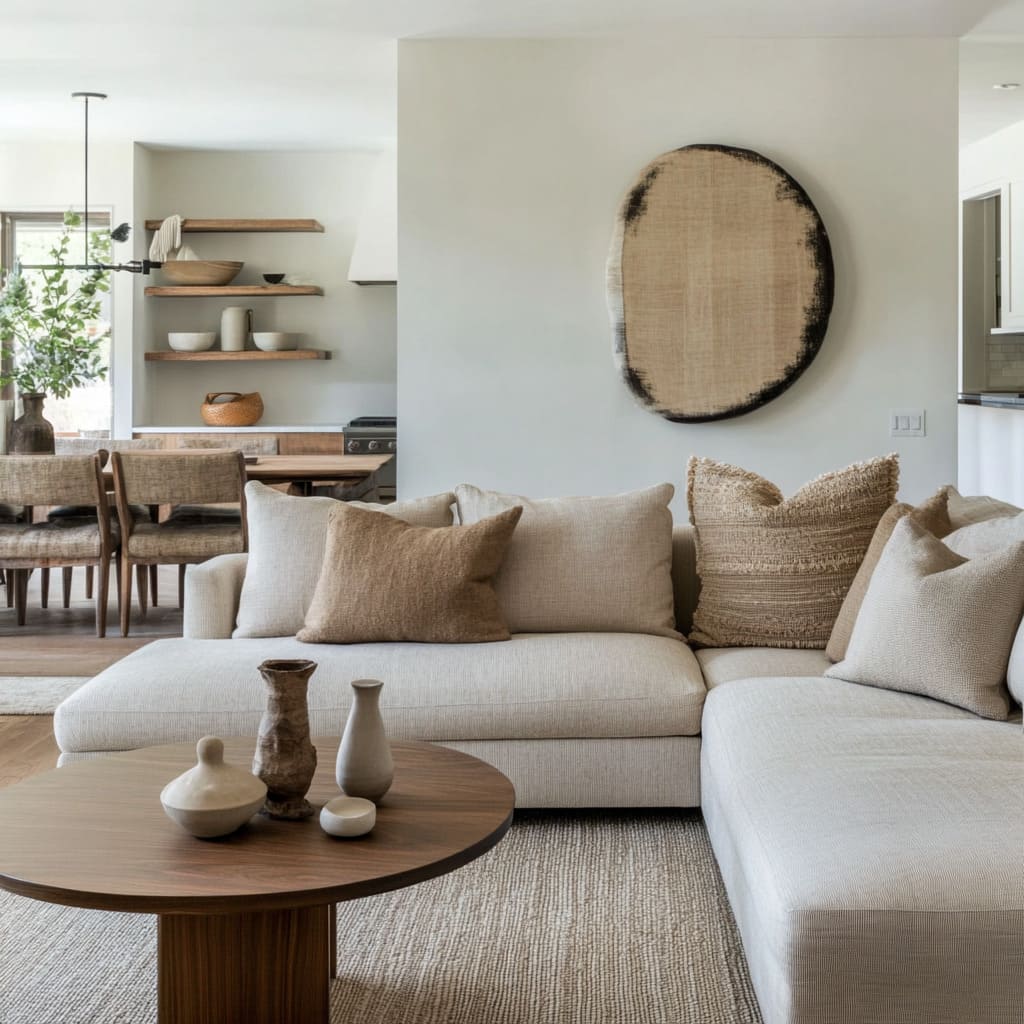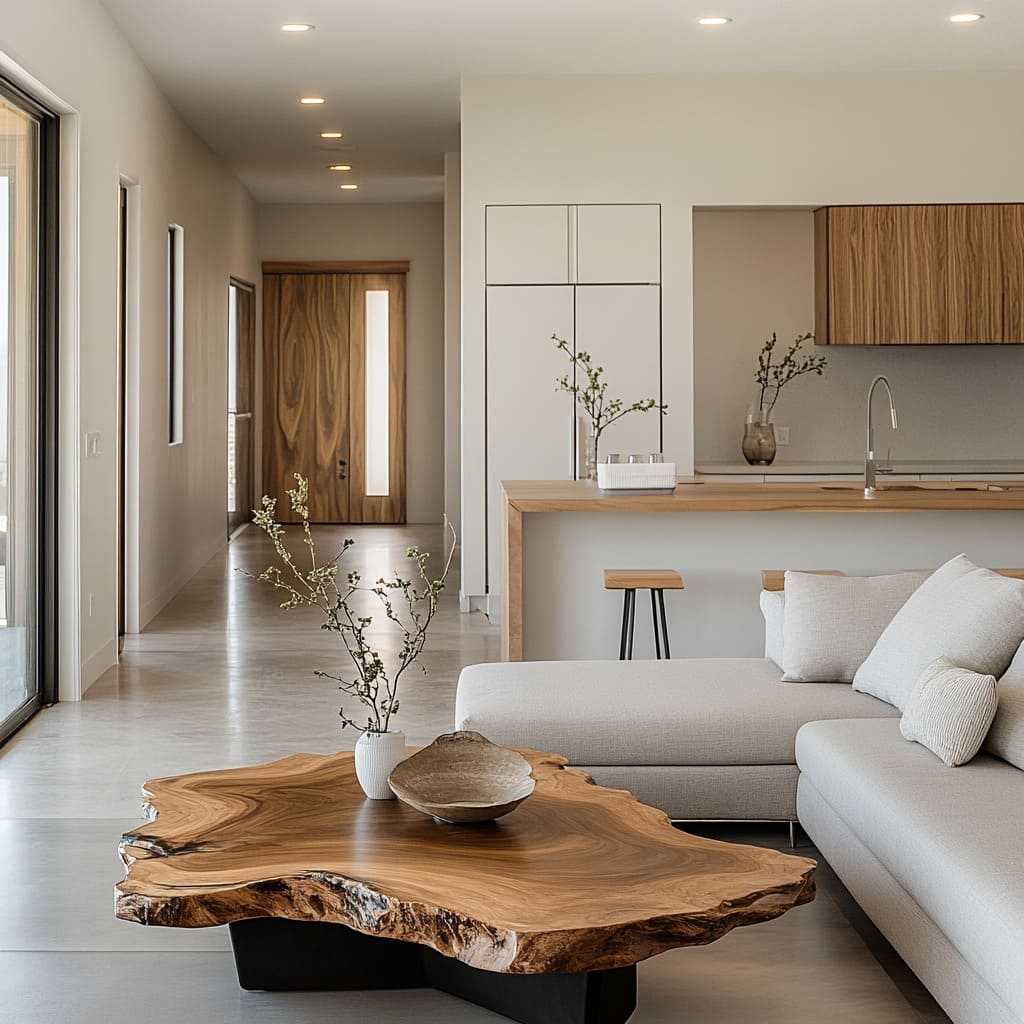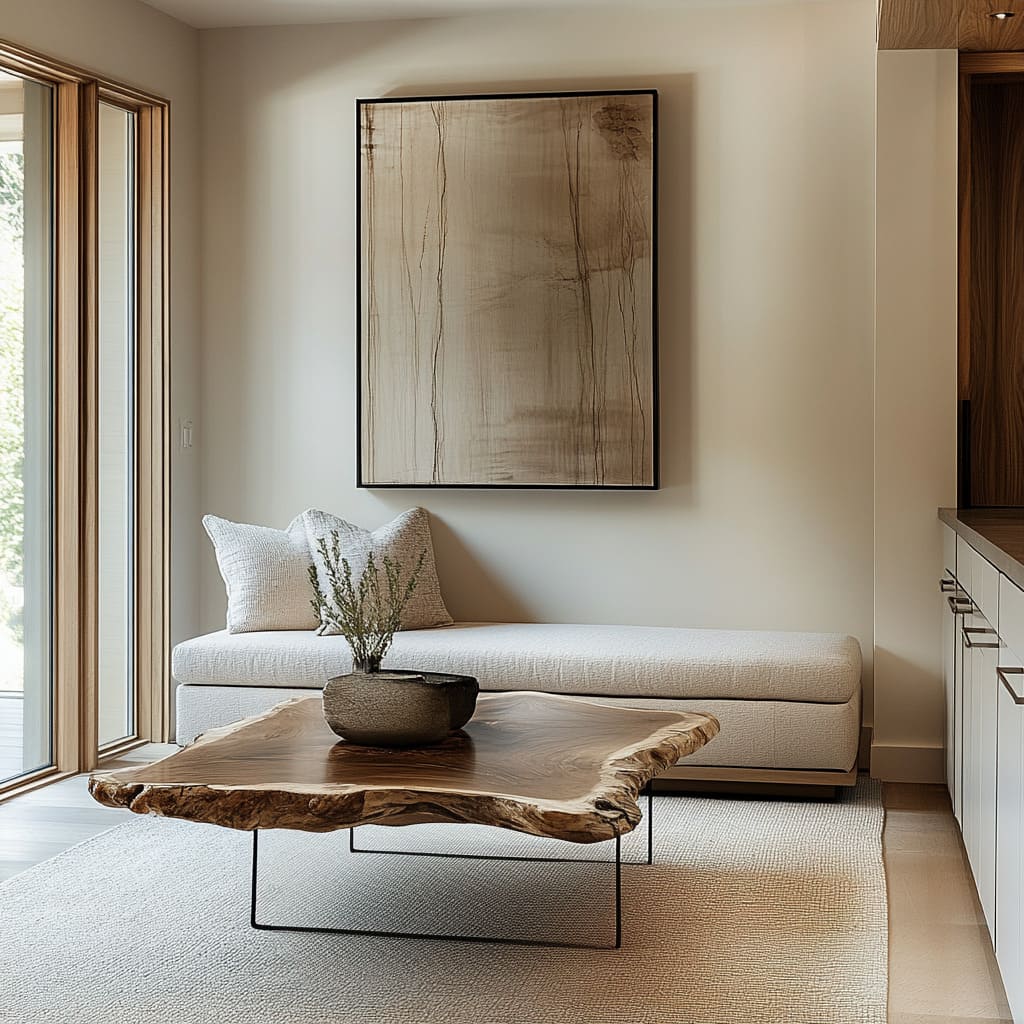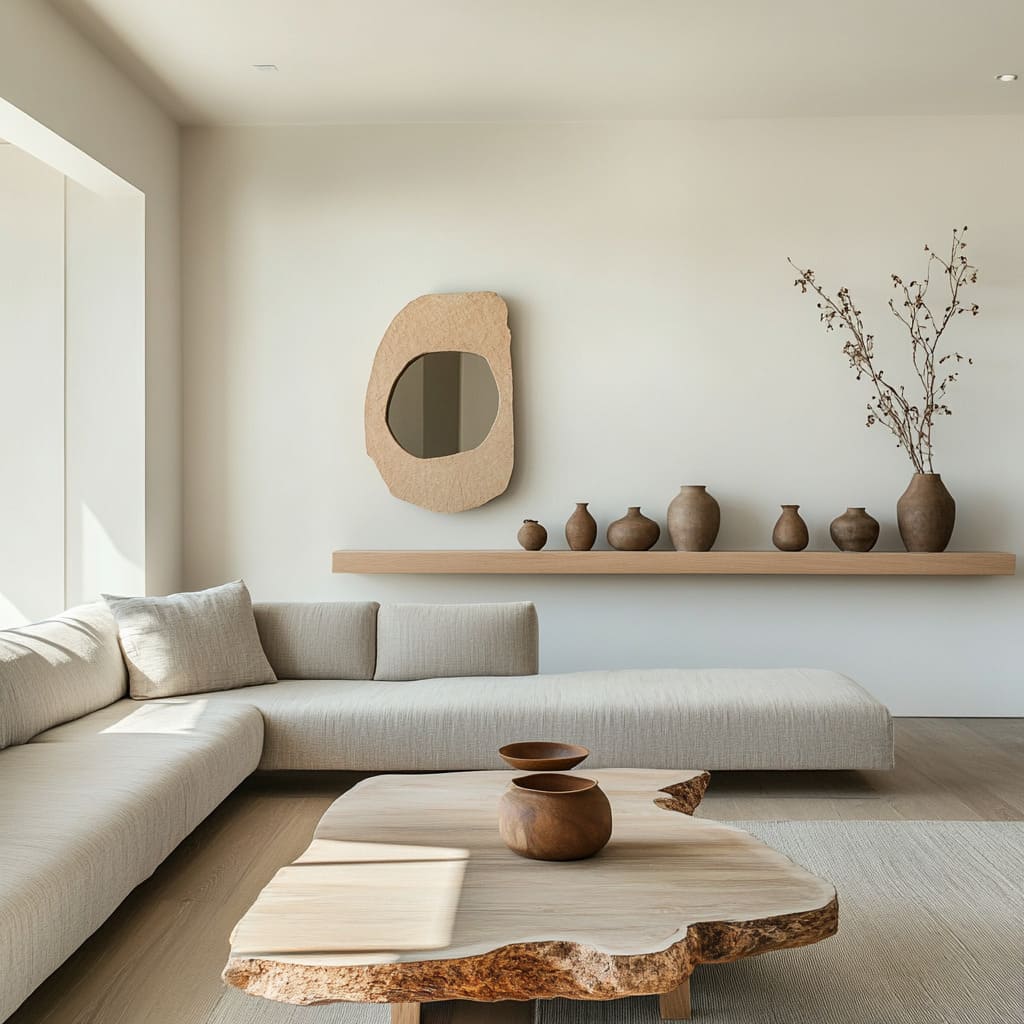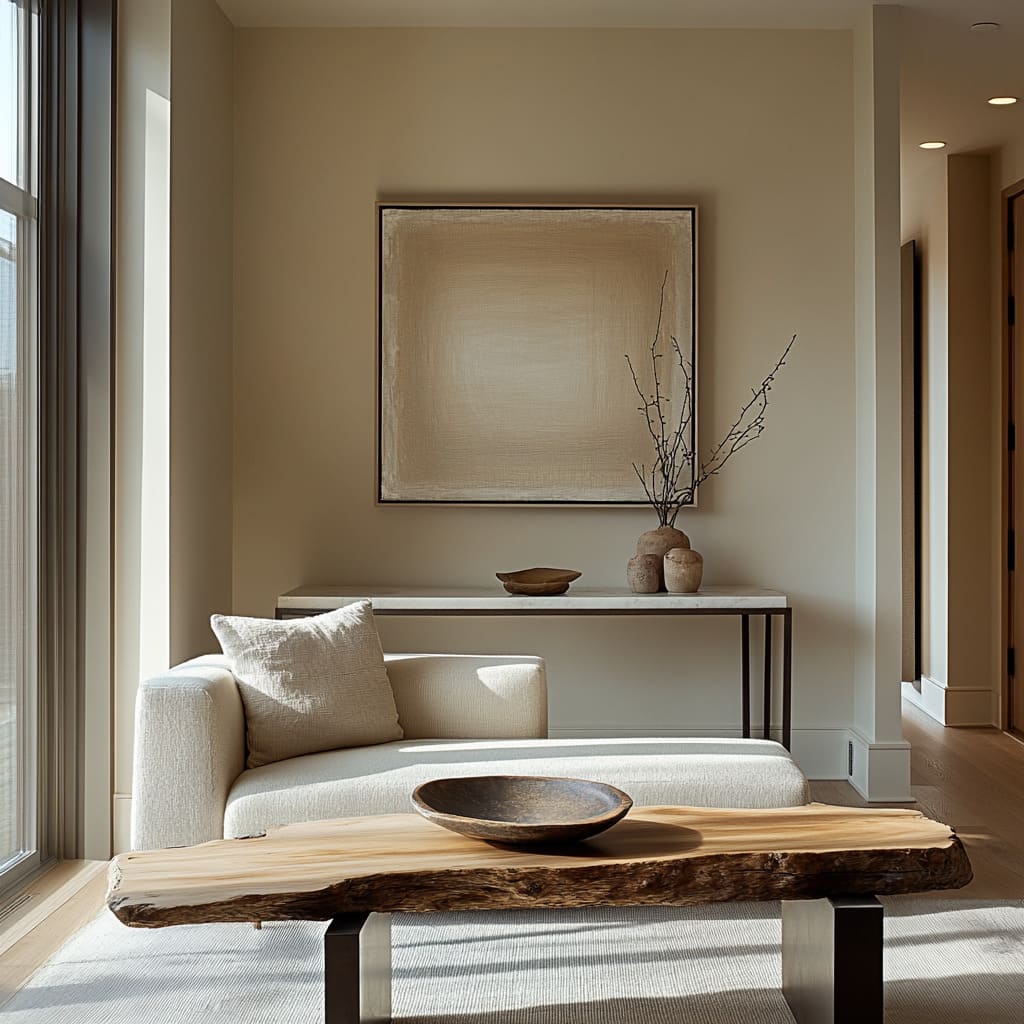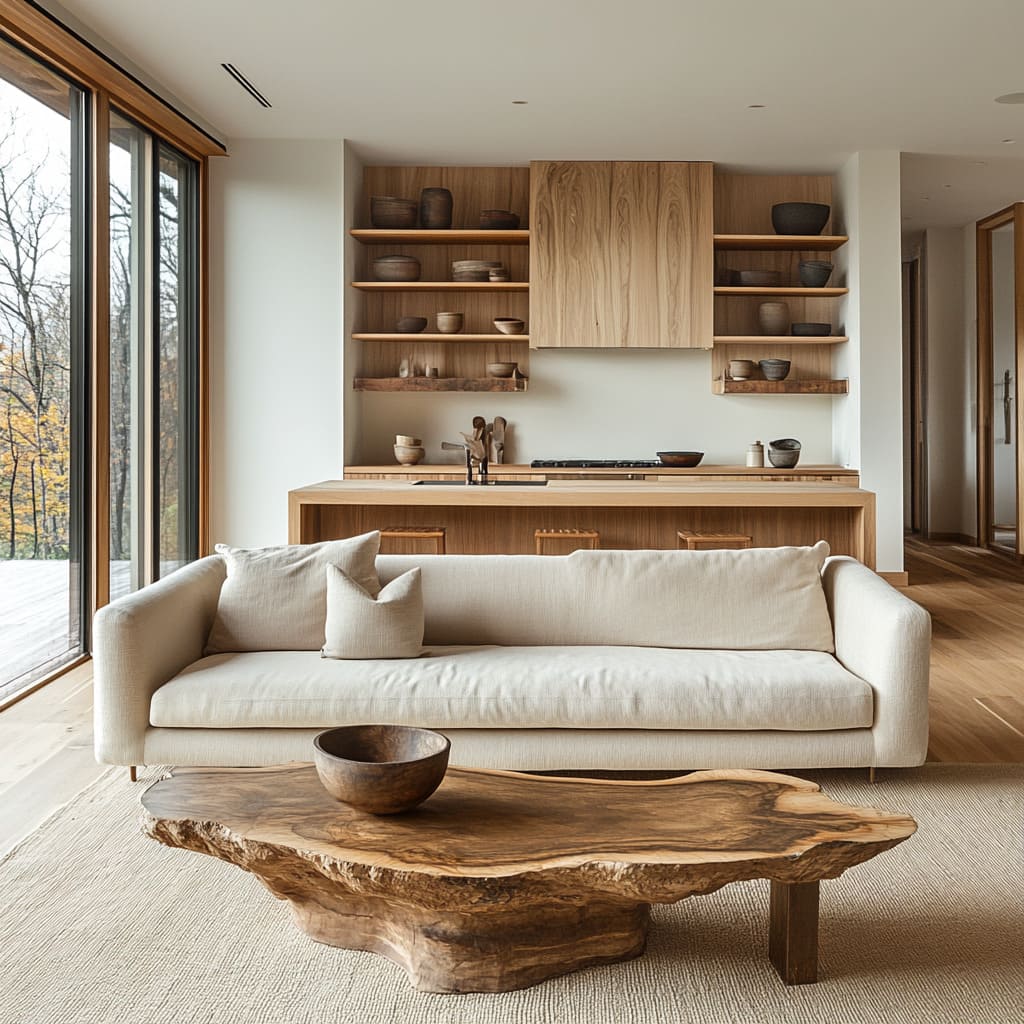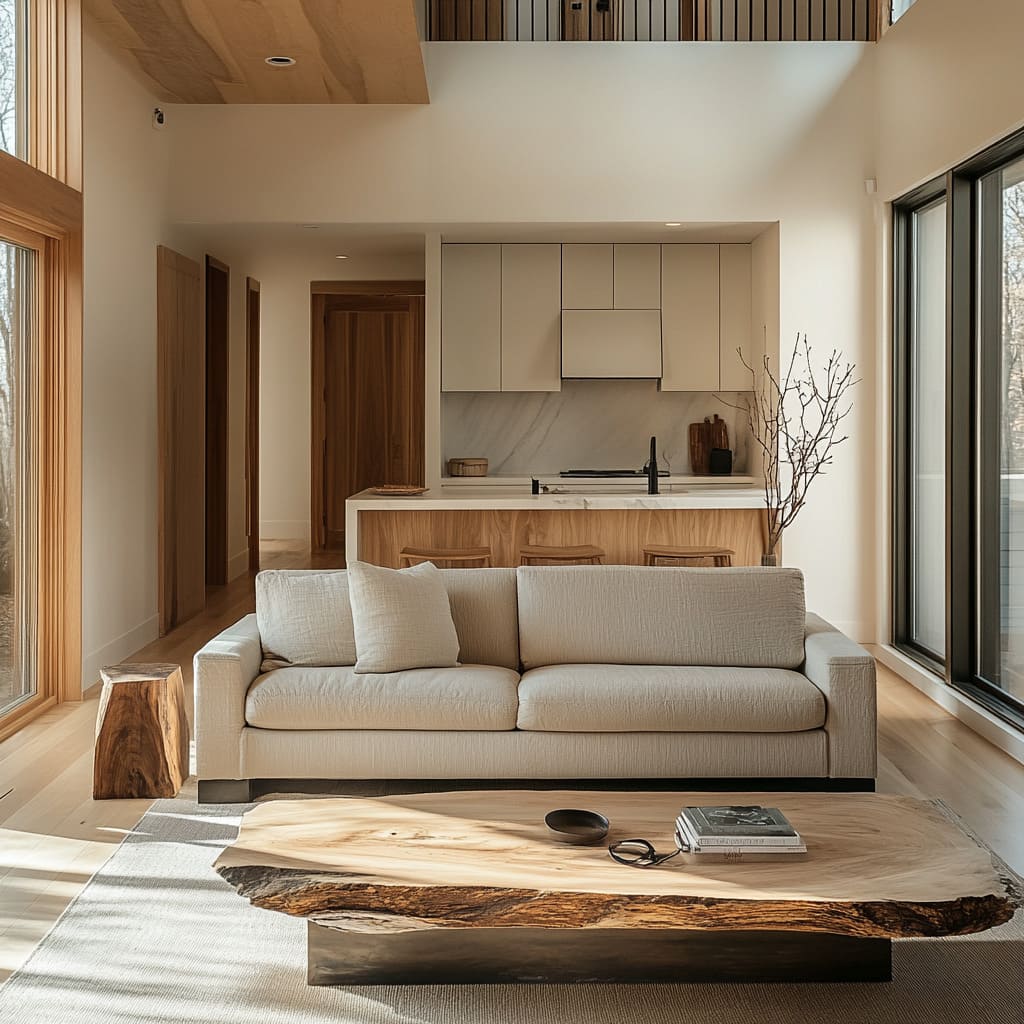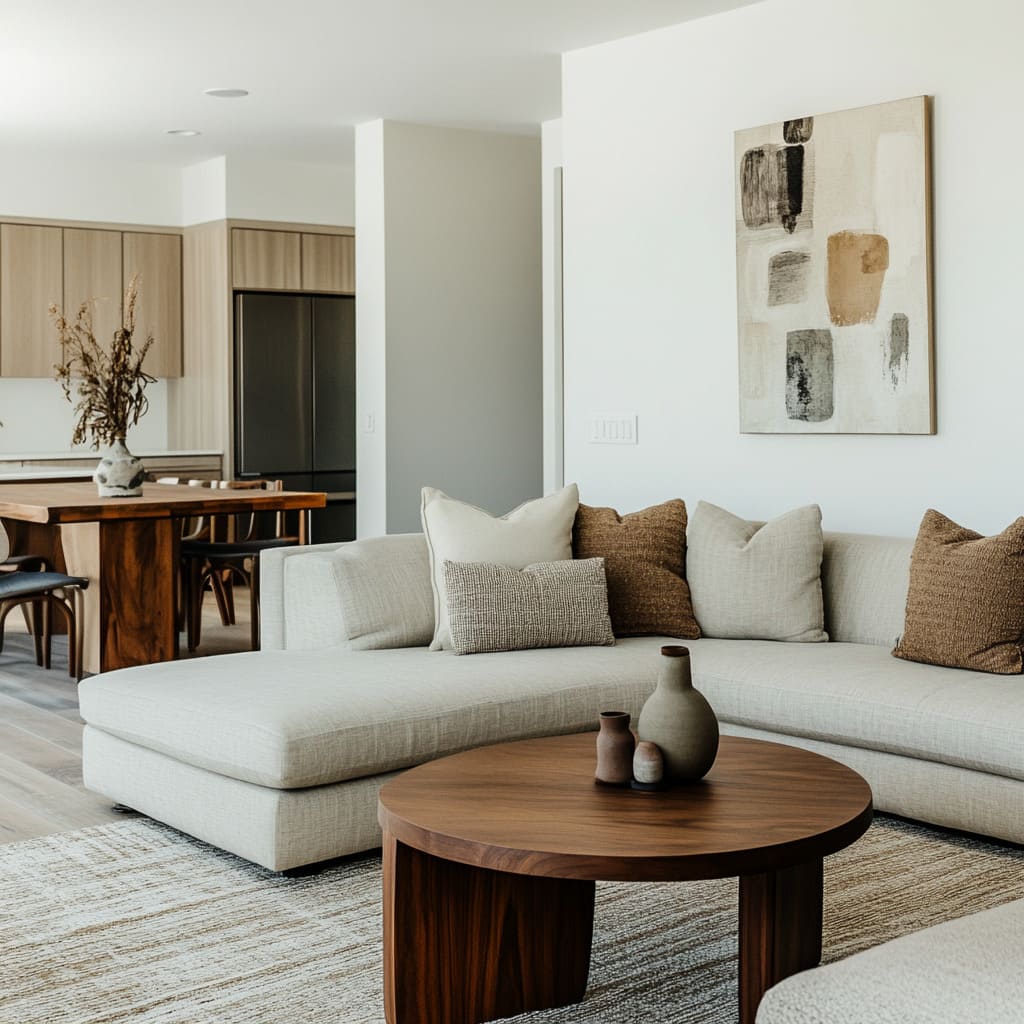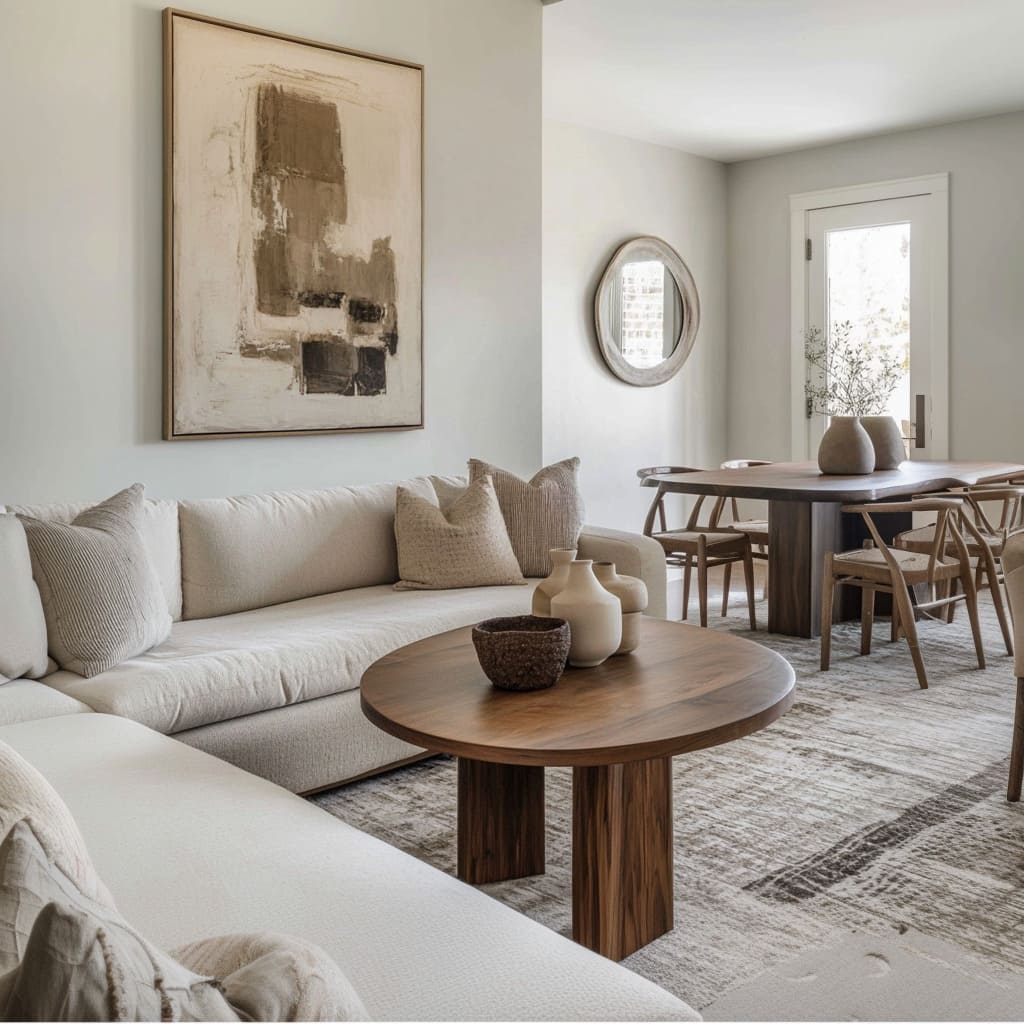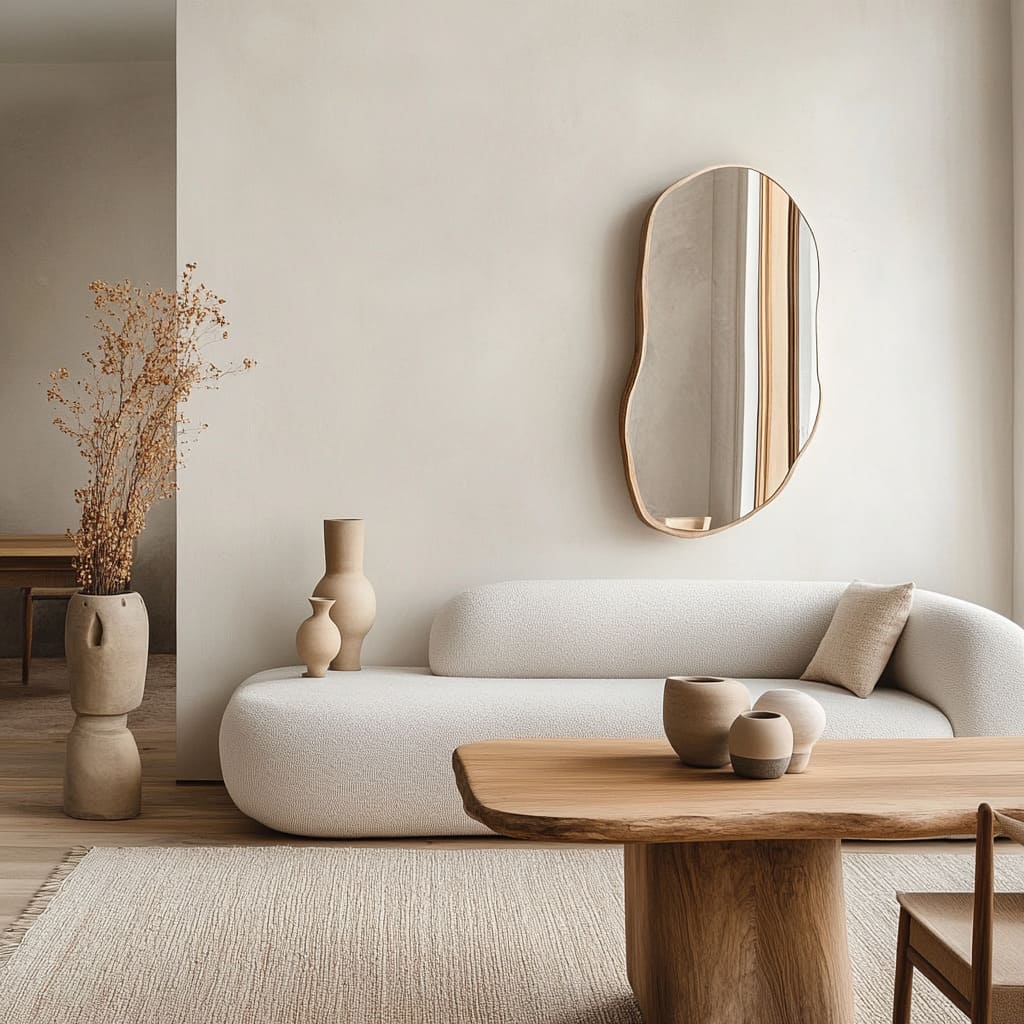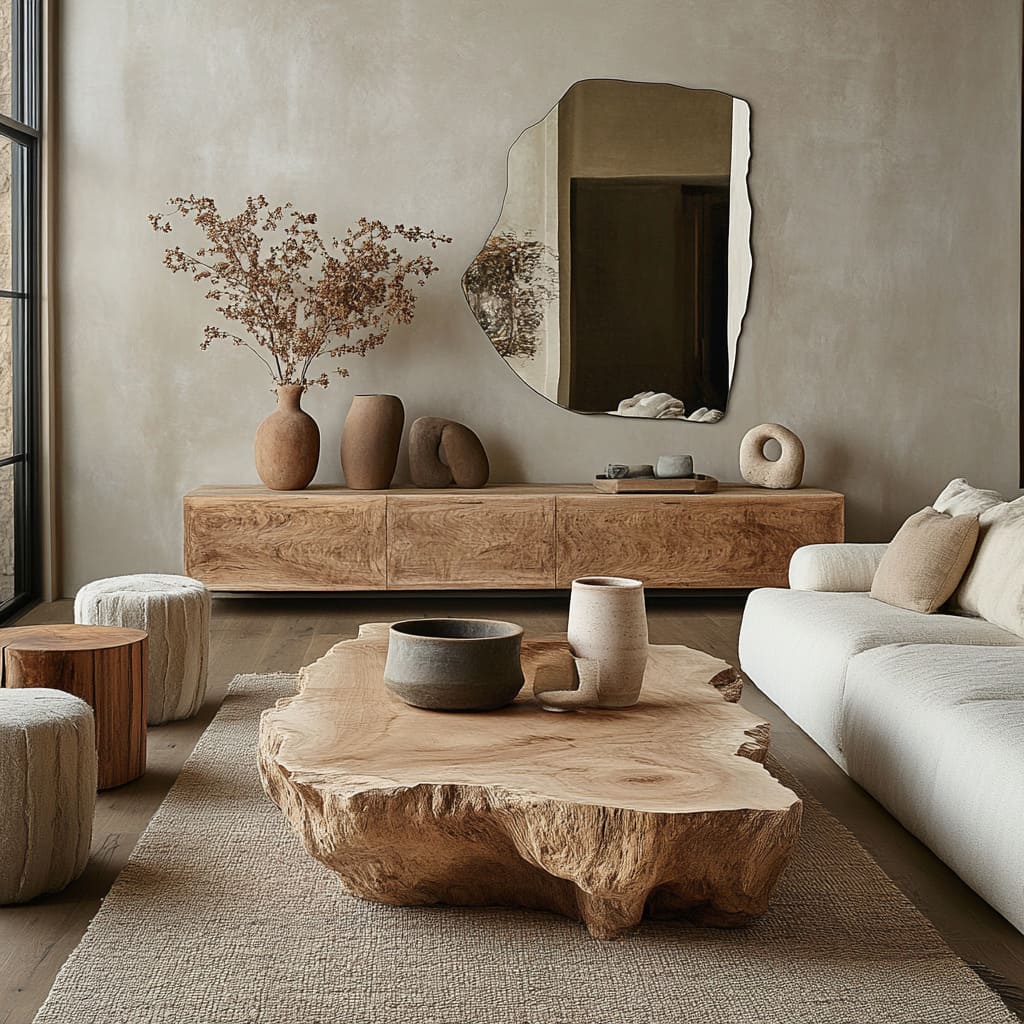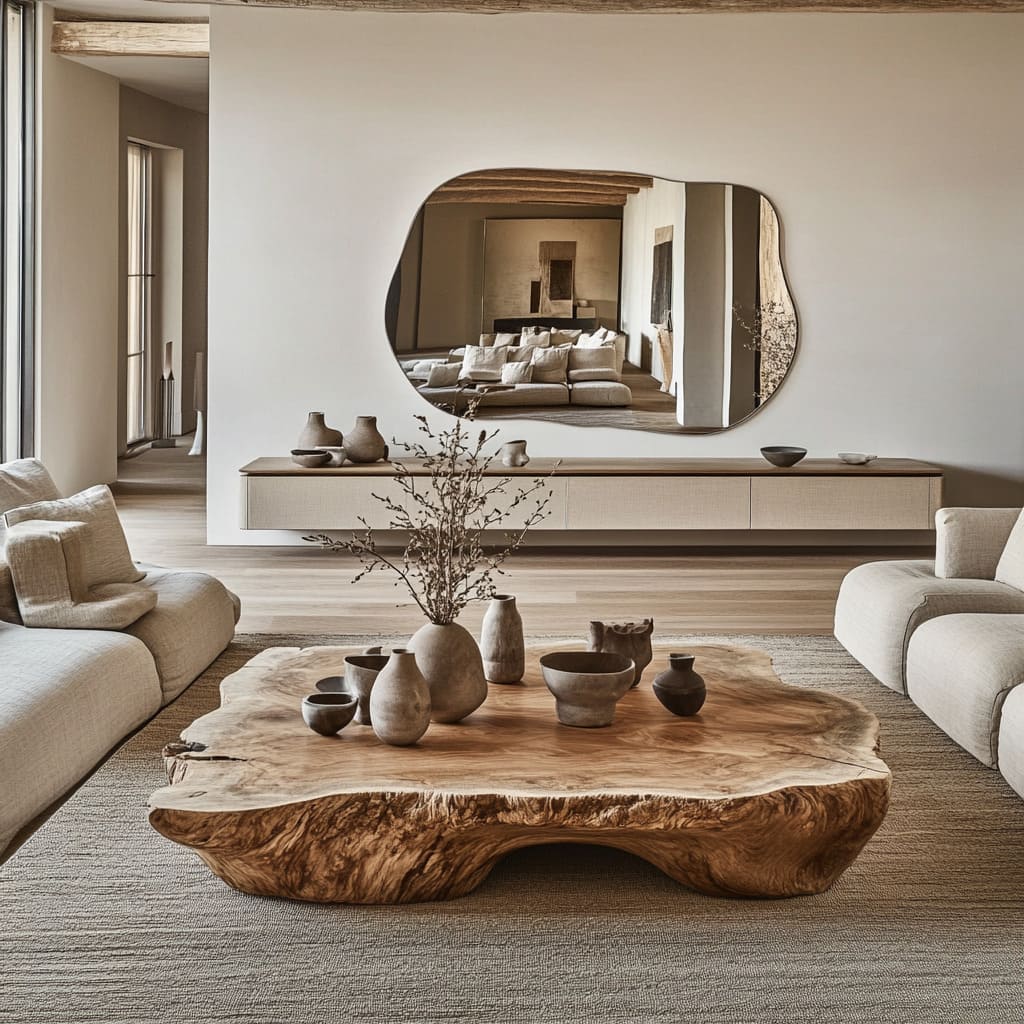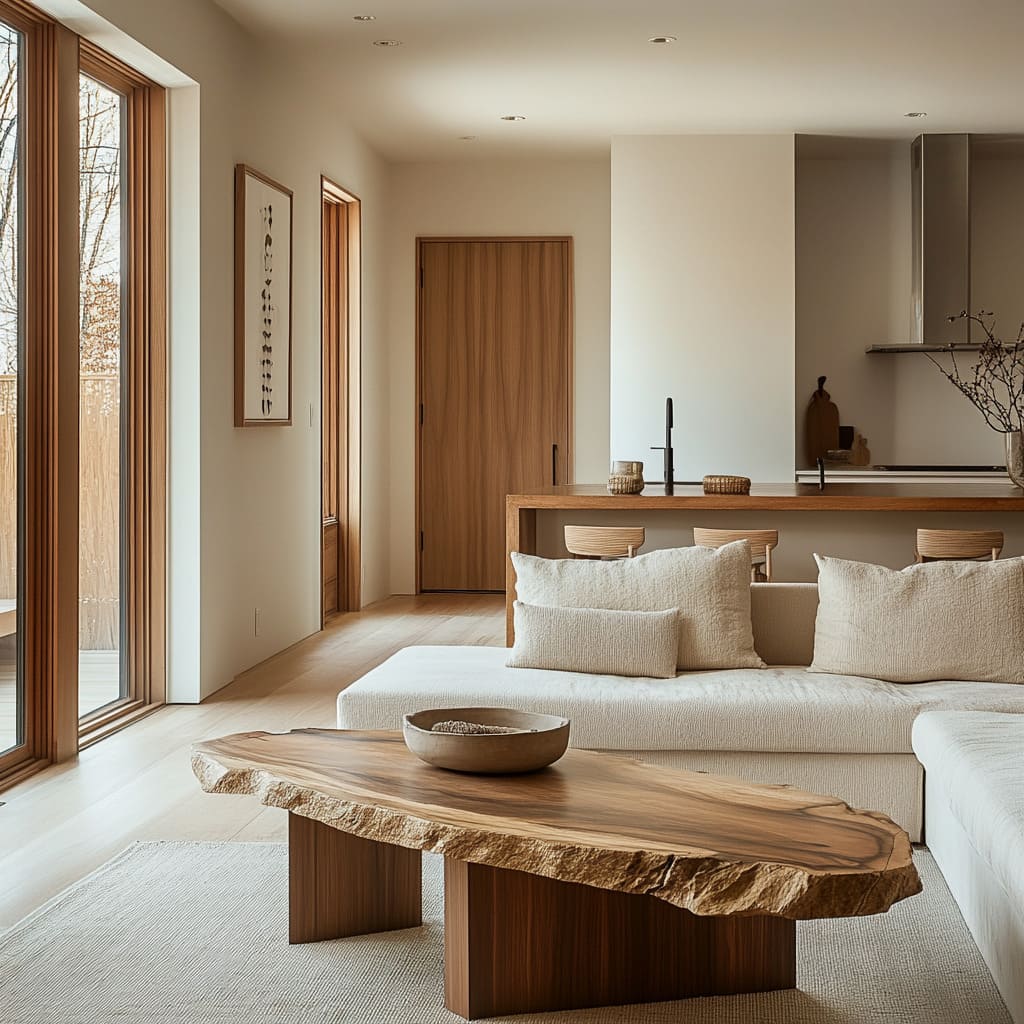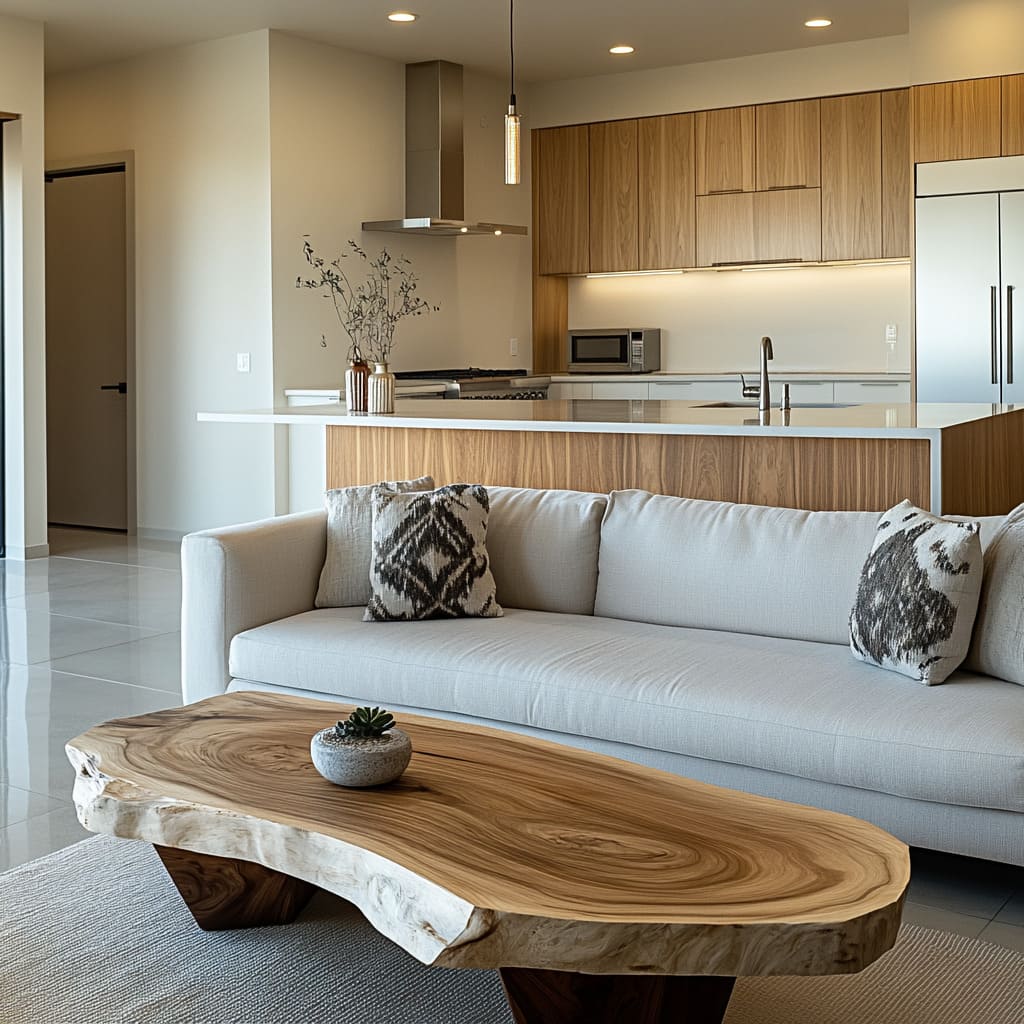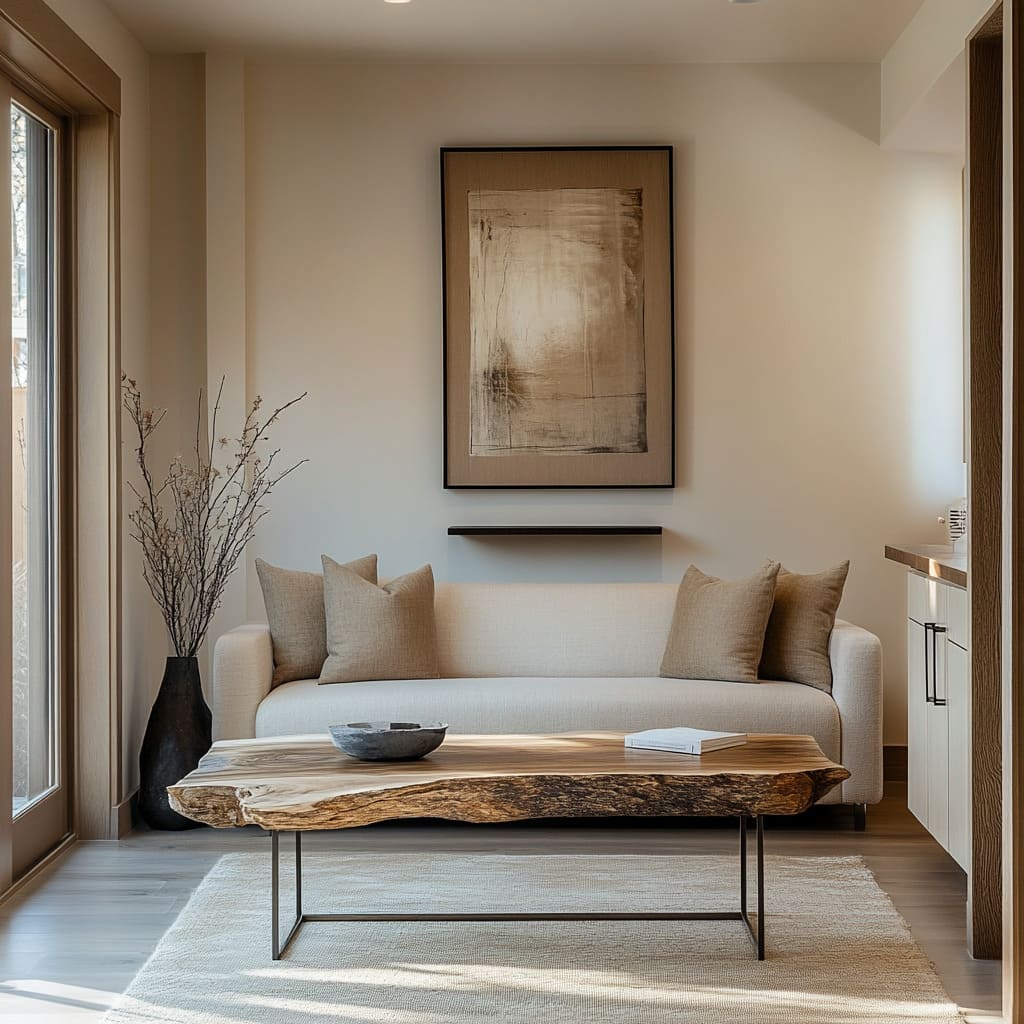Japandi style, a unique blend of Japanese minimalism and Scandinavian functionality, has emerged as a favorite in modern interior design. This style combines the best of both worlds: the clean, uncluttered lines of Japanese interiors and the cozy, functional approach of Scandinavian design.
With its focus on creating balanced, tranquil spaces, Japandi style offers a refreshing way to rethink how we live. The appeal lies in its simplicity and the use of natural materials that bring a sense of calm and comfort to any home.
As more people seek to create peaceful environments that promote well-being, Japandi has gained popularity for its ability to transform living spaces into oases of relaxation. In this article, we will explore how you can refresh your home with Japandi style, offering detailed ideas and inspiration to guide you through this design approach.
Whether you are looking to redecorate an entire room or make small adjustments, Japandi interior design principles provide a foundation for creating a home that feels both modern and timeless. By focusing on minimalist design, the use of natural materials, and a carefully curated neutral color palette, Japandi can help you create spaces that are both functional and inviting
Japandi interior design is built around a few core principles that make it stand out. It emphasizes simplicity, with a focus on decluttering and creating clean, open spaces.
Functionality is also key, as every piece of furniture or decor has a purpose and contributes to the room’s overall harmony. Natural materials play a crucial role, with wood, bamboo, stone, and linen being commonly used to add warmth and texture.
Finally, a muted color palette featuring soft shades of beige, gray, and off-white is often complemented by accents of black, gray, and natural wood tones. These elements work together to create a living environment that is not only aesthetically pleasing but also promotes relaxation and comfort
Understanding Japandi Style
Japandi design is a fusion of Japanese and Scandinavian design elements, combining the best aspects of both to create a cohesive and balanced aesthetic. At its core, Japandi is about merging the minimalist approach of Japanese interiors with the functional simplicity of Scandinavian design.
Both styles share a love for simplicity, clean lines, and uncluttered spaces, which makes their combination feel natural and effortless. The emphasis is on creating environments that are both beautiful and practical, with a deep respect for craftsmanship and natural materials
One of the key characteristics of Japandi interior is its focus on minimalism. This means using only what is necessary and avoiding excess.
The goal is to create spaces that are free from clutter, allowing the room to breathe and the mind to relax. Clean lines and simple forms dominate, with furniture that is both functional and aesthetically pleasing.
Japandi decor often includes pieces that are handmade or crafted from natural materials, emphasizing quality over quantity. This approach reflects a deep appreciation for craftsmanship and the beauty of imperfection, which is a central tenet of both Japanese and Scandinavian design philosophies.
In a Japandi style living room, for example, you might find a mix of sleek, modern furniture paired with rustic, natural elements. The use of neutral color palettes is another hallmark of Japandi design, with shades of beige, gray, and off-white creating a soft, calming backdrop.
Accents of black, gray, and natural wood tones are often used to provide contrast and visual interest. The overall effect is a space that feels balanced and harmonious, where every element has its place and purpose
Color Palette and Ambiance in Japandi Style
The color palette in Japandi style is all about creating a calming and cohesive atmosphere. Soft, neutral tones such as beige, gray, and off-white are commonly used to establish a tranquil environment.
These colors are not only soothing but also versatile, allowing them to work well with a variety of different textures and materials. The aim is to create a space that feels open and airy, with a sense of lightness that promotes relaxation and well-being.
In addition to these neutral tones, Japandi design often incorporates natural wood tones and muted earth colors. These elements add warmth and depth to the space, creating a more inviting and comfortable environment.
The use of natural materials like wood and stone also helps to ground the design, providing a sense of stability and connection to nature. These materials are often left in their natural state, with minimal treatment, to showcase their inherent beauty and texture
To add a touch of contrast and visual interest, darker accents such as black metal fixtures or dark ceramics are often included in Japandi interiors. These elements provide a striking counterpoint to the softer tones, drawing the eye and adding depth to the design.
The combination of light and dark creates a dynamic interplay that enhances the overall aesthetic, making the space feel more layered and interesting. In a Japandi living room, for instance, a dark ceramic vase or a black-framed mirror might be used to create a focal point, adding a subtle yet effective contrast to the lighter surroundings.
By carefully balancing these different elements, Japandi style creates an environment that feels both cohesive and harmonious. The use of neutral colors, natural materials, and thoughtful accents allows for a design that is both understated and impactful, providing a perfect backdrop for modern living.
Whether you are looking to create a space that is peaceful and relaxing or one that is stylish and contemporary, Japandi offers a versatile approach that can be adapted to suit any home
Furniture and Layout in Japandi Style
Minimalist Furniture Choices:
When it comes to Japandi style furniture, the focus is on simplicity and functionality. Furniture pieces are selected not only for their aesthetic appeal but also for their practicality and the role they play in the overall design.
The hallmark of Japandi furniture lies in its clean lines and simple forms, which contribute to an uncluttered and harmonious environment. Each piece is thoughtfully chosen to serve a specific purpose, ensuring that the room remains functional and free from unnecessary elements
Low-profile seating is a key feature in Japandi interiors. Sofas and chairs with low backs and sleek silhouettes are favored, as they create a sense of openness and continuity within the space.
Upholstered in natural fabrics such as linen or cotton, these pieces add a layer of comfort without overwhelming the room. The use of simple wooden frames further emphasizes the minimalist aesthetic, often crafted from light or medium-toned woods like oak, ash, or beech.
These materials not only enhance the room’s natural feel but also align with the overall color palette of soft, neutral tones. In addition to seating, other furniture pieces, such as coffee tables and sideboards, are selected for their streamlined designs and functional attributes.
A common choice in Japandi style is the live-edge wooden coffee table, which serves as both a functional piece and a subtle nod to the natural world. The organic shape of the live-edge wood brings a touch of nature into the room, creating a focal point without disrupting the calm and balanced aesthetic
Balanced and Open Layouts:
Japandi interiors are characterized by their open, airy spaces that promote a sense of flow and movement. The layout of a Japandi room is carefully planned to ensure that each area feels connected yet distinct.
This approach creates a sense of balance and harmony, where every piece of furniture has its place and purpose. To achieve this effect, furniture is arranged to encourage easy movement and unobstructed views throughout the space.
In a Japandi living room, for example, the seating might be arranged in a way that facilitates conversation and interaction, while still allowing for a clear line of sight to other areas of the room. The placement of furniture often follows a symmetrical pattern, which adds to the overall sense of order and tranquility
The key to creating a successful Japandi layout is to maintain a sense of spaciousness. This is achieved by avoiding overcrowding and keeping surfaces clear of clutter.
Instead, the focus is on a few well-chosen pieces that contribute to the room’s aesthetic without overpowering it. For instance, a minimalist sideboard might serve as a storage solution while also providing a surface for displaying carefully selected Japandi decoration items, such as handcrafted ceramics or simple vases
Discover What You Can Accomplish in Your Minimalist Living Room
Wondering how far your budget can stretch? Whether you’re planning to introduce a subtle touch or experiment with a fresh concept, our calculator provides all the insights you need.
[budget_renovation_calculator]
Materials and Textures in Japandi Interiors
Natural Materials:
Natural materials are a cornerstone of Japandi interiors, adding warmth and texture to the space while reinforcing the connection to nature. Wood is a dominant material, used extensively for flooring, furniture, and decorative accents.
Light oak, beech, and ash are popular choices for Japandi flooring and furniture, thanks to their light tones and subtle grain patterns that complement the overall color palette. In some cases, darker woods like walnut may be used to provide contrast and add depth to the design
Bamboo and rattan are also frequently used in Japandi interiors, particularly in accessories and accent pieces. These materials bring a natural, organic feel to the space and are often incorporated through items like baskets, lampshades, or woven chairs.
Stone and ceramics are other key materials, used for both functional and decorative purposes. Stone, for example, might be featured in countertops or as part of a minimalist fireplace design, while ceramics are commonly used for decorative bowls, vases, and other small accessories.
The use of these natural materials is not only aesthetically pleasing but also practical, as they tend to be durable and easy to maintain. Moreover, their inherent textures add a tactile dimension to the space, creating a more engaging and inviting environment
Incorporating Textures:
Texture plays a vital role in Japandi interiors, adding depth and interest to the minimalist aesthetic. While the overall look is clean and uncluttered, the use of textured fabrics and materials prevents the space from feeling flat or sterile.
Linen and cotton are popular choices for upholstery and curtains, providing a soft, natural feel that complements the room’s color palette. These fabrics are typically kept in neutral tones to maintain a cohesive look, but their varied textures help to create a layered and dynamic interior
Woven elements are another important feature in Japandi design. Rattan chairs, wicker baskets, and seagrass rugs introduce a natural texture that adds warmth and comfort to the space.
These elements are often used sparingly, as the goal is to enhance the room’s tactile appeal without overwhelming it. The result is a balanced blend of smooth and textured surfaces that adds visual and sensory interest
Key Design Elements in Japandi Style
Statement Pieces and Focal Points:
In a Japandi interior, statement pieces are used thoughtfully to create focal points without overpowering the room. A live-edge wooden coffee table, for instance, can serve as a central element in a living room, drawing attention with its natural shape and rich wood grain.
Similarly, a sculptural mirror with an organic frame might be positioned above a sideboard to add a touch of artistry and reflect light, enhancing the room’s open feel. The key to incorporating statement pieces in Japandi home decor is balance.
These items should stand out yet harmonize with the rest of the decor. Handcrafted ceramics, vases, and decorative bowls are often used as subtle accents that complement the overall design.
Their simple, organic shapes and muted colors add interest without distracting from the room’s calm, cohesive aesthetic
Integration of Nature:
Bringing elements of nature indoors is a fundamental aspect of Japandi design. This approach not only enhances the organic feel of the space but also contributes to a sense of tranquility and well-being.
Potted plants are a popular choice, adding a touch of greenery that contrasts beautifully with the room’s neutral tones. Dried branches and floral arrangements can also be used to introduce natural textures and forms, adding a dynamic element that changes with the seasons
For those looking to incorporate more nature-inspired elements, creating an indoor zen garden or minimalist plant arrangement can be a great option. These features add a calming presence to the room and serve as a reminder of the natural world outside.
When placed strategically, such as near Japandi window treatments or in a corner that receives ample light, these elements can become a defining feature of the space. By combining minimalist furniture choices, natural materials, and thoughtful decor, Japandi living room ideas offer a fresh approach to modern living.
This style emphasizes simplicity and functionality, creating spaces that are both beautiful and practical. With careful attention to detail and a focus on quality, Japandi interiors can transform any home into a haven of comfort and calm
Lighting in Japandi Interiors
Maximizing Natural Light:
Natural light plays a crucial role in Japandi style, as it highlights the simplicity and natural beauty of the design elements. The use of natural light aligns with the minimalist principles of both Japanese and Scandinavian aesthetics, which prioritize an open, airy feel that connects the indoors with the outdoors.
Large windows are a key feature in a Japandi style house, allowing abundant light to fill the room and enhancing the sense of space. These expansive windows often remain unobstructed, emphasizing clear views and a seamless connection to the outside world
To further enhance the brightness and openness of a room, sheer curtains are often used. These lightweight, translucent fabrics diffuse natural light gently, creating a soft, inviting glow that complements the room’s neutral tones.
The choice of window treatments is intentional, balancing privacy with the desire to maximize daylight. Sheer curtains in neutral shades such as off-white or light beige add a layer of softness without detracting from the minimalist aesthetic, allowing natural light to become a prominent feature of the room.
In Japandi interiors, positioning furniture to make the most of natural light is also important. Placing seating arrangements near windows not only makes the most of the available light but also creates cozy spots for relaxation and contemplation.
The goal is to create a bright, welcoming environment that feels connected to nature, which is a core principle of Japanese Scandinavian interior design
Subtle and Functional Artificial Lighting:
While natural light is a fundamental aspect of Japandi style, artificial lighting also plays a key role in creating a warm and inviting atmosphere. The use of minimalist lighting fixtures is central to maintaining the clean, uncluttered look that defines Japandi interiors.
Recessed ceiling lights are a popular choice for their understated presence and ability to provide even, ambient lighting without disrupting the room’s visual harmony. These lights are often used in combination with pendant lights and floor lamps, which feature simple designs that complement the overall aesthetic
Pendant lights in Japandi interiors are typically crafted from natural materials such as wood, bamboo, or metal with a matte finish, reinforcing the room’s natural theme. Placed above dining tables, kitchen islands, or seating areas, these lights add a focal point while providing functional task lighting.
Floor lamps with clean lines and minimalist shades can be strategically positioned in corners or next to seating areas to create cozy, well-lit spaces for reading or relaxation. Ambient and task lighting are both important in Japandi style interiors.
Ambient lighting provides a soft, general illumination that enhances the overall atmosphere of the room, while task lighting focuses on specific areas to support activities such as cooking, reading, or working. The combination of these lighting types ensures that the space is both functional and inviting, maintaining the delicate balance that is characteristic of Japandi design
Decorative Accessories and Accents
Minimalist Decor Choices:
When it comes to Japandi home decor, the mantra is less is more. The emphasis is on carefully selected decorative accessories that enhance the space without adding clutter.
Each item is chosen for its simplicity and ability to complement the room’s overall aesthetic. Neutral-toned ceramics, stoneware, and handcrafted items are favored for their ability to add character and texture without overwhelming the minimalist design
For example, a set of simple ceramic vases in muted tones can be placed on a sideboard or coffee table to add a subtle touch of elegance. Stoneware bowls and trays, with their natural textures and earthy colors, can be used to display small objects or serve functional purposes.
These pieces not only add visual interest but also connect with the natural elements that are central to Japandi interiors. The key is to avoid overcrowding surfaces with too many objects.
Instead, each decorative piece is given space to breathe, allowing it to be appreciated for its unique qualities. This approach ensures that the room remains uncluttered and harmonious, in line with Japandi style’s focus on simplicity and functionality
The Role of Art and Wall Decor:
Art and wall decor play a subtle but important role in Japandi interiors. The goal is to enhance the space without drawing too much attention away from the overall design.
Minimalist wall decor, such as abstract art pieces in neutral tones or simple wooden frames, can add depth and personality to a room. These pieces often feature soft, organic shapes or subtle geometric patterns that complement the clean lines and natural materials used throughout the space
Mirrors with natural or organic frames are another popular choice in Japandi style interiors. These mirrors not only serve a functional purpose but also help to reflect light, making the room feel brighter and more spacious.
A large, well-placed mirror can become a focal point in a room, adding a sense of depth and dimension while staying true to the minimalist aesthetic. When selecting art and decor for a Japandi home, it’s important to consider how each piece fits into the overall design.
The aim is to create a cohesive look that feels balanced and harmonious, with every element contributing to the space’s calm and inviting atmosphere
Creating a Japandi-Inspired Living Space
Living Room Design Tips:
Transforming a living room into a Japandi-inspired space involves thoughtful selection of furniture, colors, and decor. Start by choosing low-profile sofas and chairs with clean lines and natural fabric upholstery.
Opt for pieces with simple wooden frames to maintain the minimalist aesthetic. A live-edge wooden coffee table can serve as a statement piece, adding a natural, organic touch that enhances the room’s earthy feel
For color choices, stick to a neutral palette of soft whites, beiges, and grays, with occasional accents of black or dark wood to add contrast. This color scheme will create a calm backdrop that allows the textures and natural materials to shine.
Use Japandi wall color ideas, such as soft taupe or light gray, to add warmth without overpowering the space. Incorporate a few carefully chosen decorative accessories, such as handcrafted ceramics or a woven basket, to add texture and interest.
These items should complement the room’s natural theme without creating visual clutter. The goal is to create a balanced and harmonious living area that feels both functional and comfortable
Integrating Open-Concept Living:
Japandi style is well-suited to open-concept living spaces, where the seamless flow between areas is key. To integrate Japandi style into an open-concept layout, start by maintaining a consistent color scheme and using similar materials throughout the space.
This will help to create a sense of continuity and cohesion, allowing the different areas to feel connected yet distinct. When arranging furniture, focus on creating clear zones for different activities, such as cooking, dining, and relaxing.
Use rugs, lighting, and furniture placement to define these areas without disrupting the overall flow. For example, a large area rug can anchor a Japandi interior design living room, while pendant lights can highlight a dining area
The choice of materials is also important in creating a unified look. Use natural materials like wood, stone, and bamboo across different areas to reinforce the connection to nature.
Consider incorporating Japandi inspiration elements, such as a wooden kitchen island or a stone countertop, to add depth and texture to the space. By maintaining a consistent approach to colors, materials, and decor, you can create a cohesive, Japandi-inspired home that feels open, airy, and inviting
Japandi Style for Small Spaces
Japandi design thrives in small spaces, blending minimalism and functionality. But in city living, maintaining a clutter-free home can be challenging. A simple solution is secure self-storage—keeping essentials accessible without disrupting your space, so you can fully embrace Japandi’s clean, open aesthetic.
Maximizing Space with Minimalism:
In smaller homes or apartments, the principles of Japandi design can be particularly effective in creating a serene and functional living environment. The minimalist lifestyle that Japandi promotes is ideal for maximizing limited space, ensuring that every element in the room serves a purpose.
One of the most effective strategies for applying Japandi design in small spaces is the use of multifunctional furniture. For example, a sofa with built-in storage or a coffee table that doubles as a desk can help keep the room organized and free from clutter, while also making the most of the available space
Smart storage solutions are another key component of Japandi decor in small spaces. Consider using furniture with hidden storage compartments or opting for wall-mounted shelving to keep surfaces clear.
Vertical storage is particularly useful in compact areas, as it takes advantage of height without encroaching on valuable floor space. Floating shelves or tall cabinets can be used to store essentials while maintaining the clean, open feel that is central to Japandi interior design.
Additionally, choosing the right size and scale for furniture is crucial. Opt for pieces that are proportionate to the room’s dimensions, avoiding anything too bulky or oversized.
Low-profile furniture, such as a minimalist sofa or a sleek dining table, can help create the illusion of more space by keeping sightlines open and unobstructed. The goal is to create a balanced environment where functionality meets simplicity, allowing the room to feel spacious and uncluttered despite its size
Creating a Cozy Yet Spacious Feel:
Creating a cozy yet spacious atmosphere in a small Japandi style living room is all about strategic design choices. Light colors play a significant role in making a room feel larger and more open.
A palette of soft whites, light grays, and muted beiges can help reflect light, enhancing the room’s brightness and giving it an airy feel. These colors are also in harmony with the natural tones often found in Japandi interiors, such as the warm hues of wood and stone.
Mirrors are another powerful tool for expanding a small space. By reflecting light and creating the illusion of depth, mirrors can make a room appear bigger than it actually is.
Placing a large mirror on a wall opposite a window can amplify natural light, brightening the space and adding a sense of openness. Additionally, mirrors with natural or organic frames can serve as both functional and decorative elements, aligning with the minimalist aesthetic of Japandi decor
Vertical storage and design elements also contribute to the feeling of spaciousness. Tall bookshelves, for example, draw the eye upward, making the ceiling appear higher and the room more expansive.
Similarly, opting for floor-to-ceiling curtains in a light, sheer fabric can enhance the vertical lines of the room, adding to the sense of height and space. By incorporating these design strategies, a small Japandi interior can feel both cozy and open, providing a comfortable living environment that doesn’t sacrifice style or function
Maintaining a Japandi Home
Decluttering and Simplification:
Maintaining the clean, minimalist aesthetic of a Japandi home requires a commitment to decluttering and simplification. The minimalist lifestyle at the heart of Japandi design encourages homeowners to be mindful of the items they bring into their space, prioritizing quality over quantity.
Regular decluttering routines are essential for keeping the space free from unnecessary objects and maintaining a sense of order and calm. One effective approach is to periodically assess each room, identifying items that no longer serve a purpose or contribute to the overall design.
This process can be guided by the principles of mindful consumption, where each new item is carefully considered before being added to the home. The focus should be on choosing pieces that are both functional and beautiful, ensuring that they enhance the space rather than contribute to visual clutter
Simplification also extends to the way the space is organized. Open shelving, for example, should be used sparingly, with only a few carefully selected items on display.
Closed storage solutions, such as cabinets or drawers, can help keep everyday essentials out of sight, preserving the clean lines and uncluttered surfaces that define Japandi style. By regularly decluttering and simplifying the space, homeowners can maintain the calm, balanced atmosphere that Japandi interiors are known for
Caring for Natural Materials:
The natural materials used in Japandi design, such as wood, stone, and fabrics, require proper care to ensure their longevity and continued beauty. Wood, a key element in Japandi interiors, should be regularly dusted and cleaned with a damp cloth to remove dirt and prevent buildup.
To protect the wood’s finish, it’s important to avoid harsh chemicals and instead use gentle, natural cleaners. Periodically treating wooden surfaces with oil or wax can also help maintain their luster and prevent drying or cracking
Stone surfaces, such as countertops or flooring, should be sealed to protect against stains and moisture. Regular cleaning with mild soap and water is usually sufficient to keep stone looking its best, but it’s important to avoid acidic or abrasive cleaners that can damage the surface.
For fabrics, such as linen or cotton upholstery, regular vacuuming and spot cleaning can help preserve their appearance. When necessary, professional cleaning can be used to address deeper stains or wear.
By taking the time to care for these natural materials, homeowners can ensure that their Japandi interior remains beautiful and functional for years to come. Proper maintenance not only preserves the aesthetic appeal of the space but also reinforces the connection to nature that is central to Japandi design
Conclusion
In summary, Japandi style offers a thoughtful approach to modern living, combining the best elements of Japanese and Scandinavian design to create spaces that are both functional and beautiful. By incorporating minimalist principles, natural materials, and a carefully curated color palette, Japandi interiors promote a calm and balanced environment that is ideal for everyday life.
Whether applied to a small apartment or a larger home, Japandi design ideas can help create a space that feels open, inviting, and deeply connected to nature
The timeless appeal of Japandi style lies in its ability to adapt to different spaces while maintaining its core principles of simplicity and functionality. By focusing on quality over quantity, and by carefully selecting each piece of furniture and decor, homeowners can create a living environment that fosters well-being and mindfulness.
As you reflect on the possibilities of Japandi design, consider how its principles can be applied to your own home, creating a space that is not only visually appealing but also a true reflection of your lifestyle

